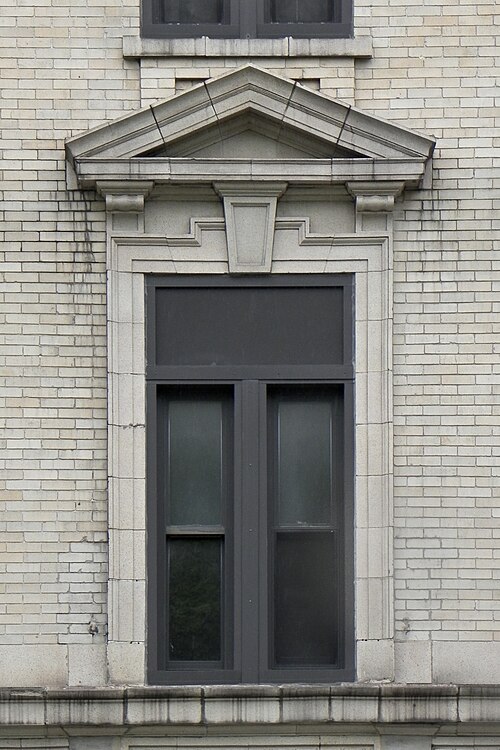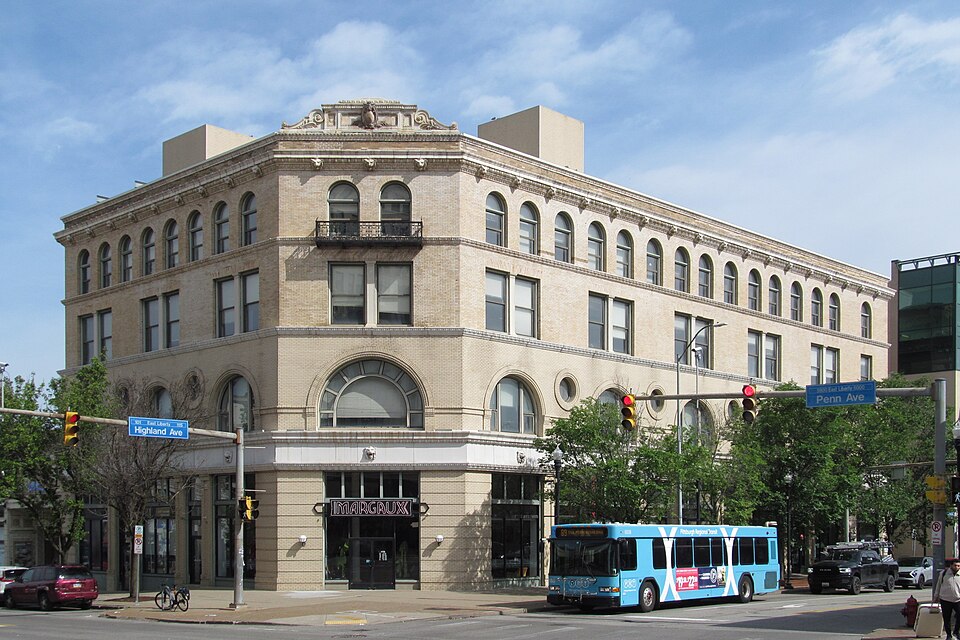
Built in 1898 for Rowe’s department store, this building has been called the Penn-Highland Building for years now. The architects were Alden & Harlow.
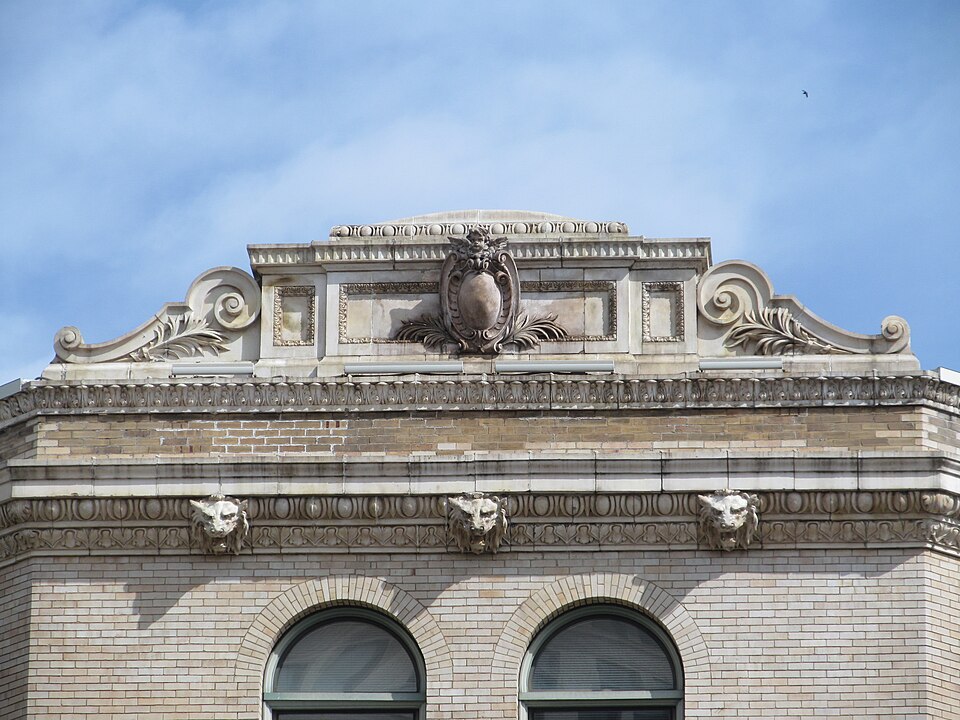
Lions stare back at you from all over the building.

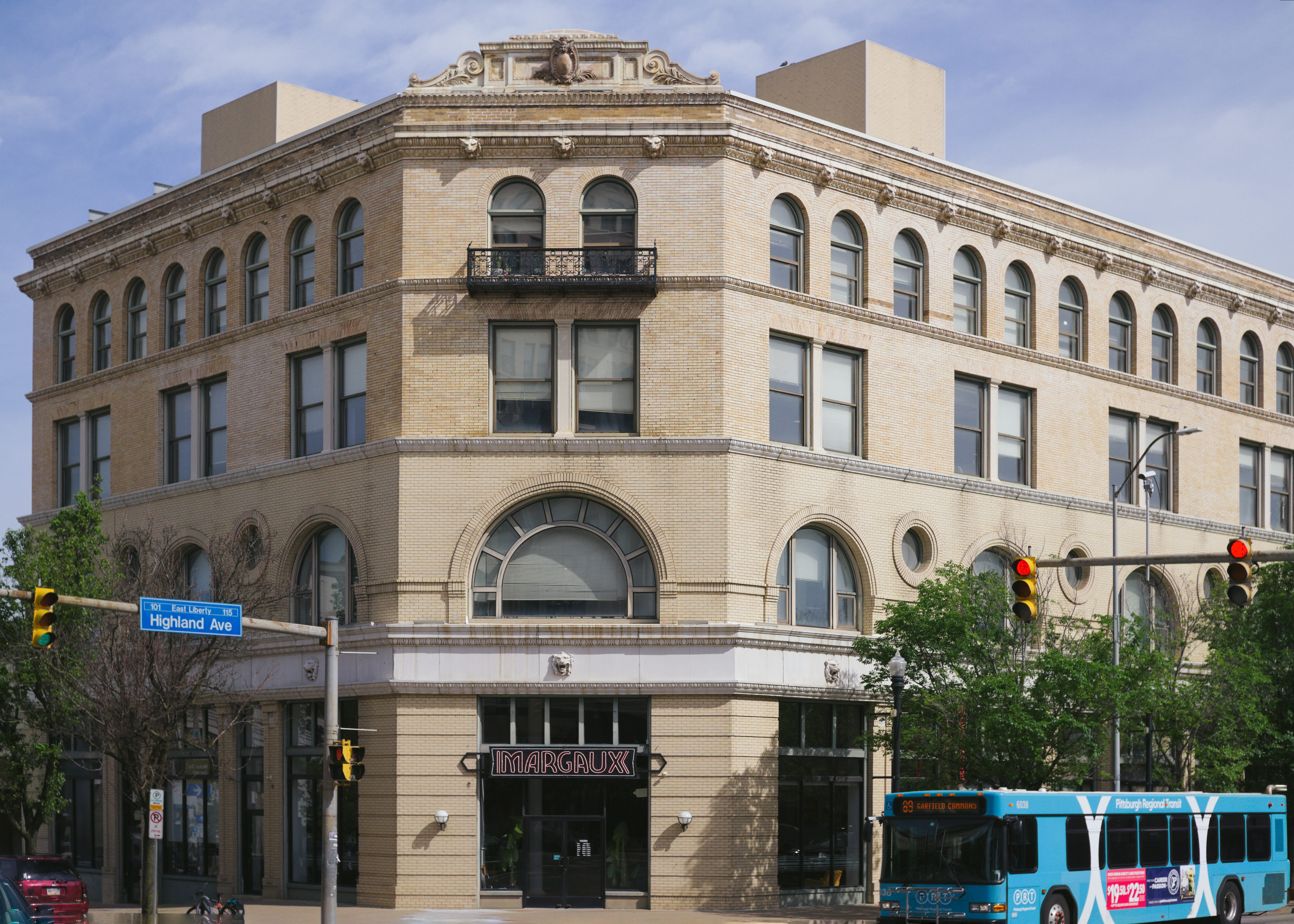
Comments

Built in 1898 for Rowe’s department store, this building has been called the Penn-Highland Building for years now. The architects were Alden & Harlow.

Lions stare back at you from all over the building.


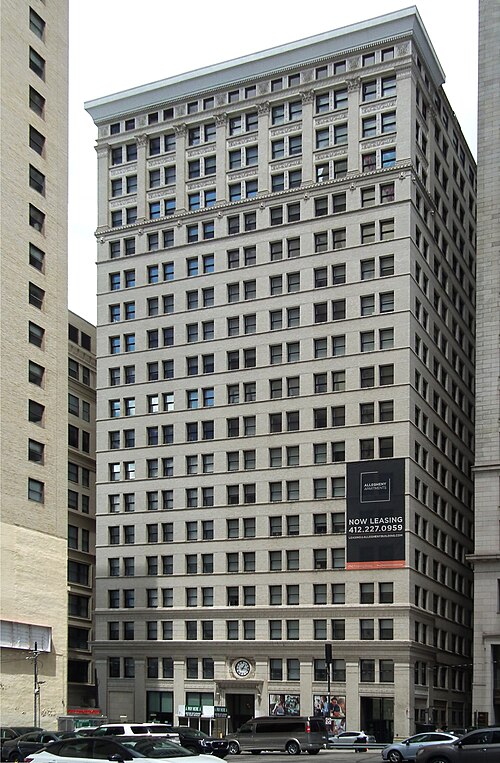
Built in 1906, this skyscraper was designed by Daniel Burnham, architect of the neighboring Frick Building, as the second part of Henry Frick’s architectural tantrum that cut off the light and air from the Carnegie Building. The Carnegie Building was demolished to make way for the nearly windowless Kaufmann’s Annex; this building, which gets plenty of light, is now luxury apartments.
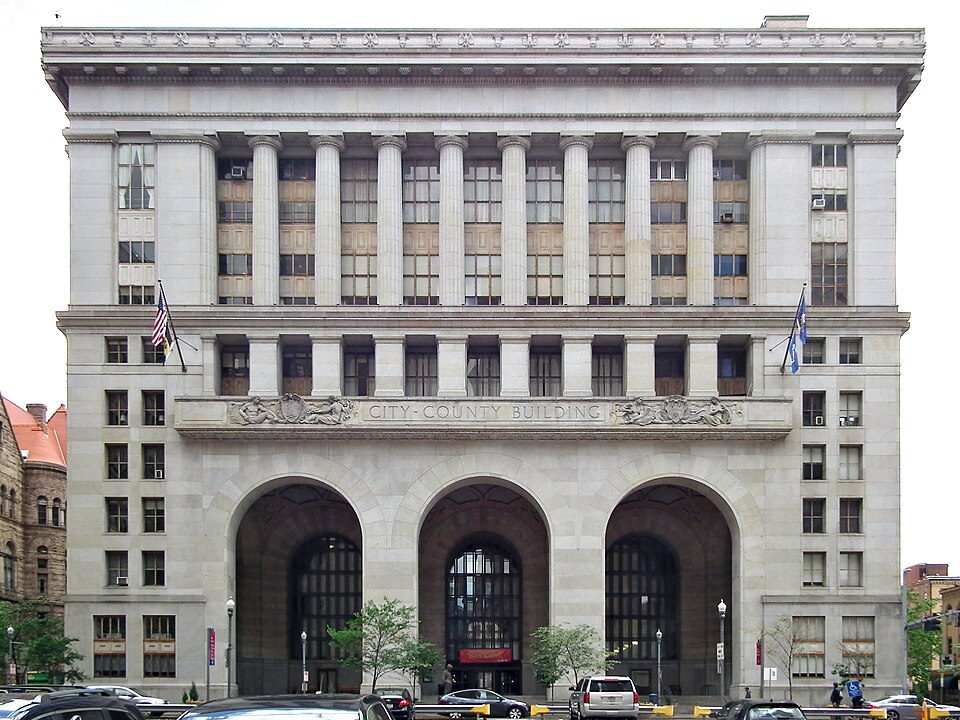
Edward B. Lee won the competition for the design of the City-County Building in “association” with Palmer & Hornbostel. Lee’s was the name in the headlines, and Lee was the only architect mentioned in the ordinance ratifying the results of the competition. But years later Lee explained that the design was Henry Hornbostel’s, with Lee just executing drawings from Hornbostel’s design. As flamboyant as he could be, Hornbostel was also generous and encouraging to his colleagues.
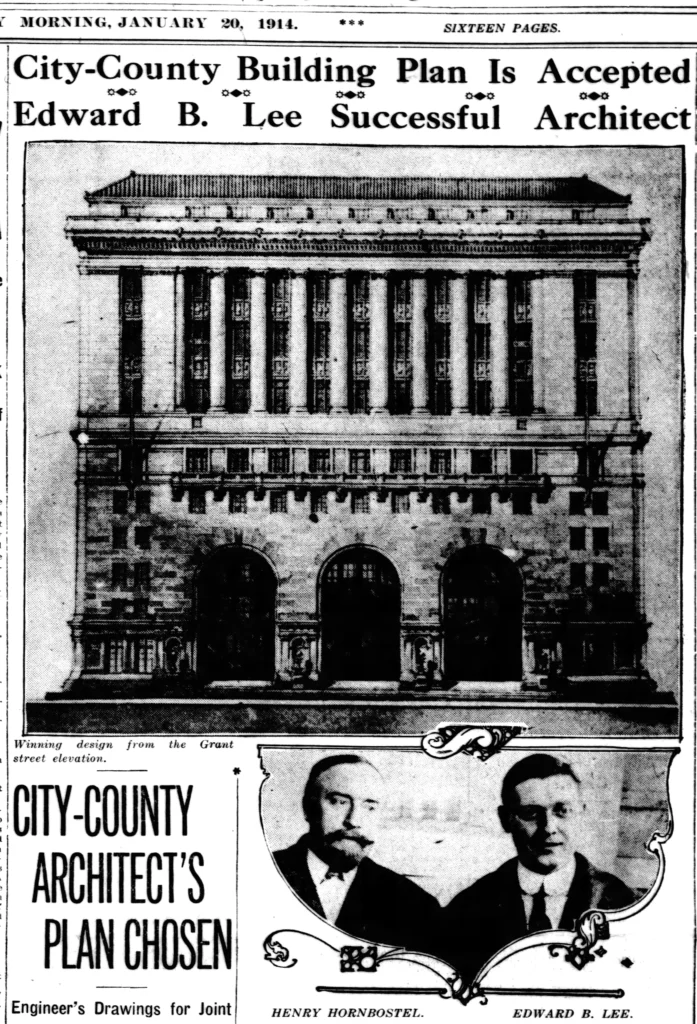
But old Pa Pitt has a suspicion that there might be more to the story than mere generosity.
In 1904, Hornbostel had won the competition for the Carnegie Tech campus, beating—among others—the famous Cass Gilbert.
In 1907, Hornbostel had won the competition for Soldiers and Sailors Hall, beating—among others—Cass Gilbert.
Now he was entering another really big competition, and the judge was Cass Gilbert, who had been selected to “prepare and conduct” the competition.1 Perhaps Hornbostel calculated that his design would have a better chance with somebody else’s name on it.
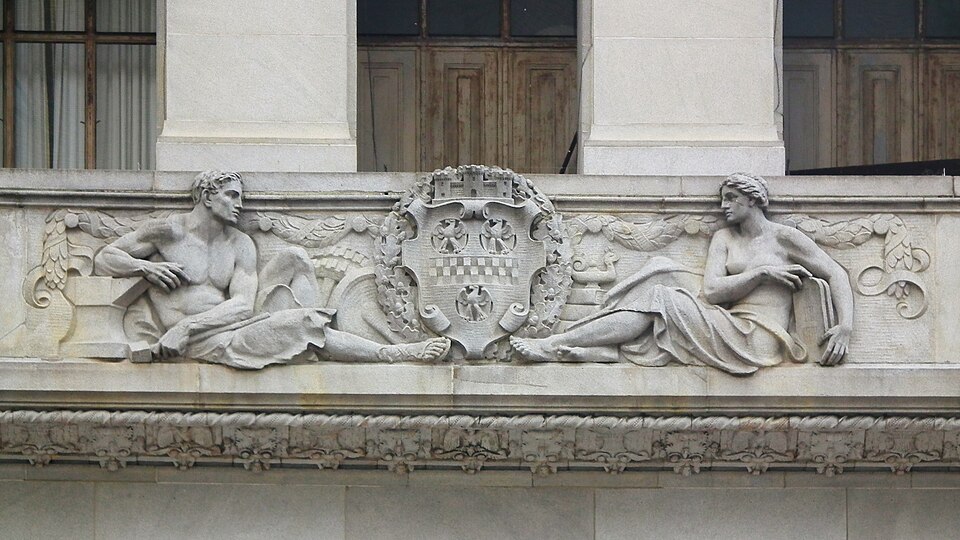
Reliefs by sculptor Charles Keck depict the arms of the City of Pittsburgh (above) and the County of Allegheny (below). Keck also contributed sculptures for Soldiers and Sailors Hall.
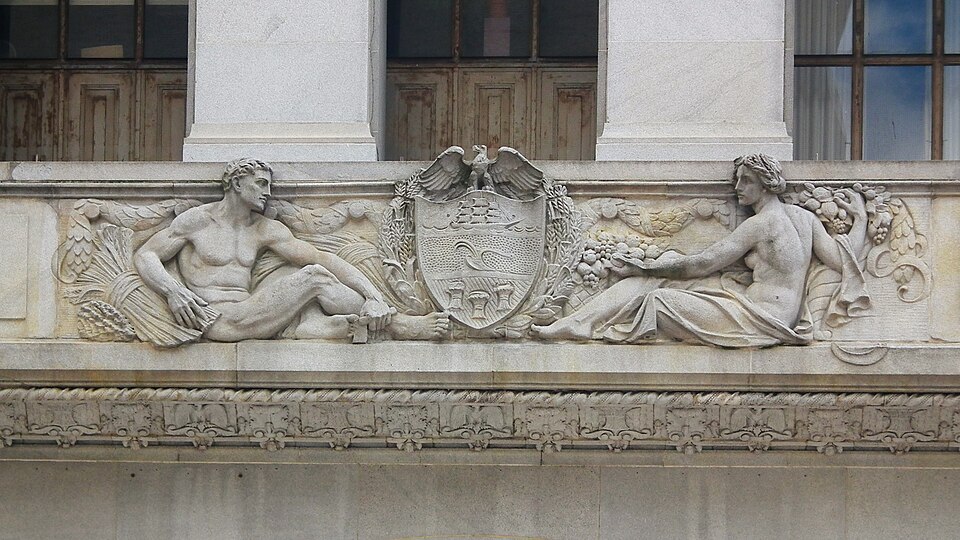
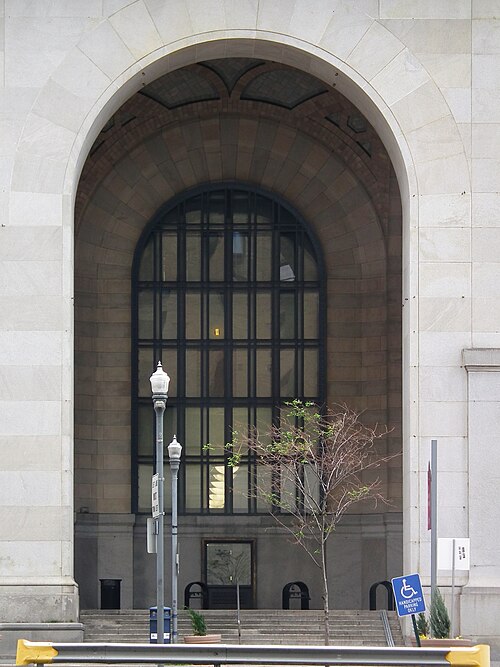
The three enormous arches are the most distinctive features of the building. Comparing the preliminary elevation above with the finished building, we can see that they were made even larger later on in the planning.
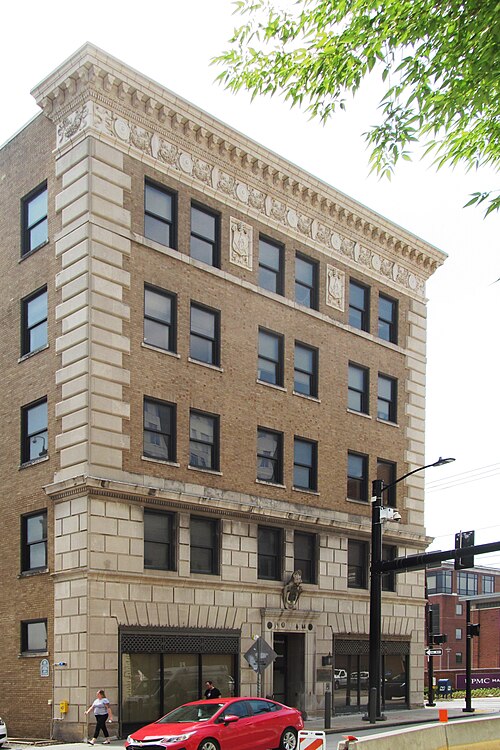
The Junior Order of United American Mechanics is a fraternal order that was originally the young people’s division of the Order of United American Mechanics. Since it has its own Wikipedia article, old Pa Pitt will send you there for information about the order. For this building, however, he is happy to be your source of information. It was built to be the national headquarters of the organization, which had previously been in the Wabash Building downtown. “The new five-story building of the Junior Order of United American Mechanics at Forbes and Halket sts., was completed last June at a cost of about $350,000, exclusive of the site. The national headquarters of the order, which formerly were in the Wabash building, occupy the entire fourth and fifth floors of the new building, while the lower floors are given over to offices and store rooms.” (Pittsburgh Press, Monday, January 4, 1926.) This building was designed by Louis Stevens, best known for elegant homes for the well-to-do, but also the designer of all the public buildings in the borough of Overbrook (now part of the city of Pittsburgh).
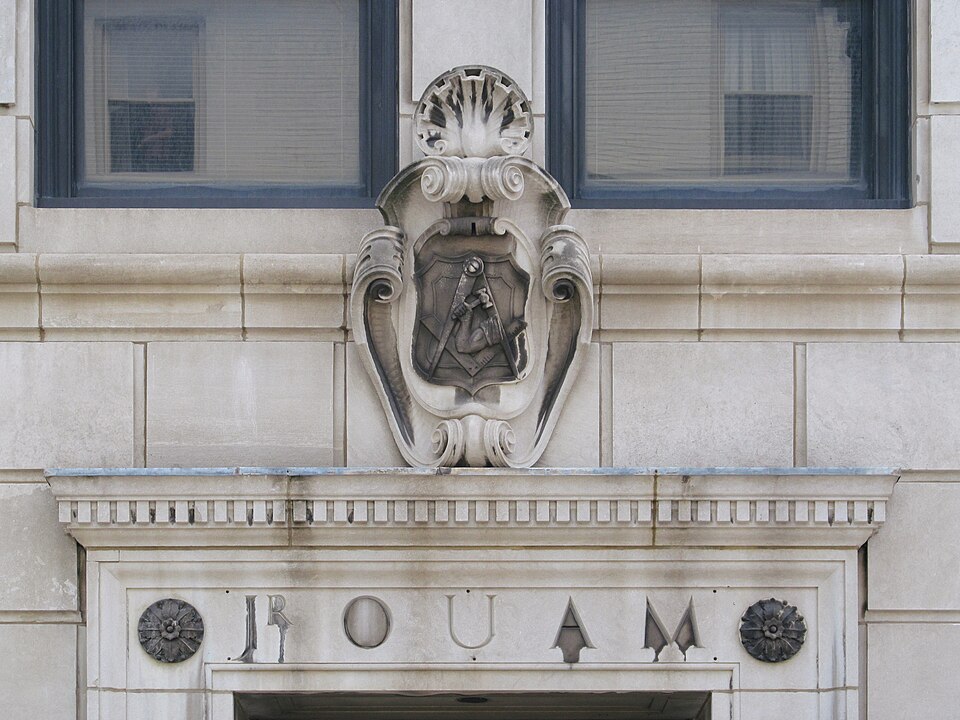
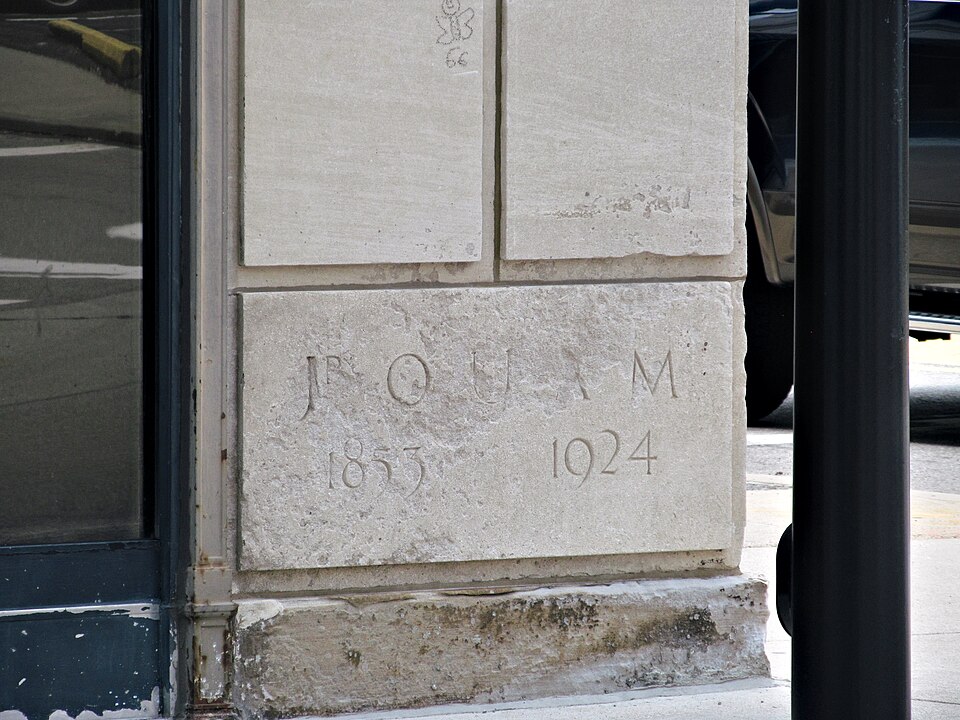
The cornerstone was laid in 1924, but the building was completed in 1925.
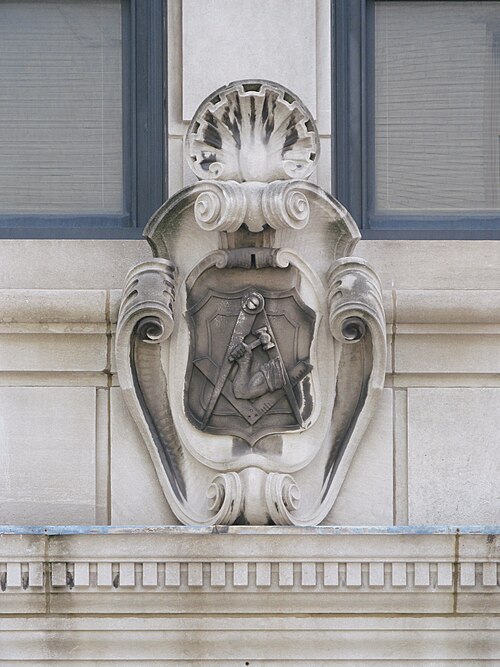
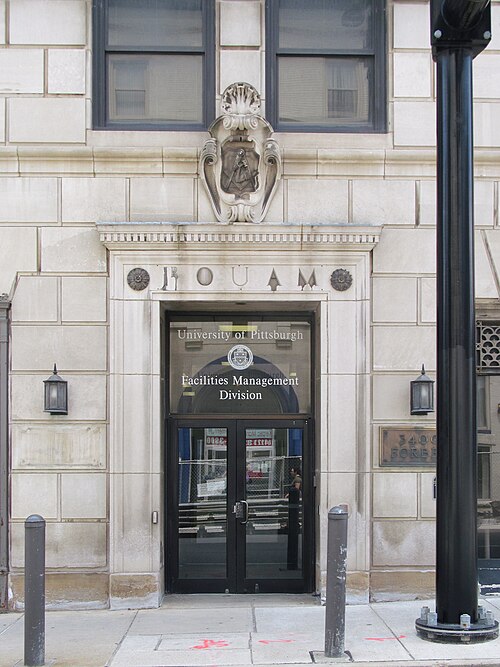
It will come as no surprise that the building now belongs to the University of Pittsburgh.
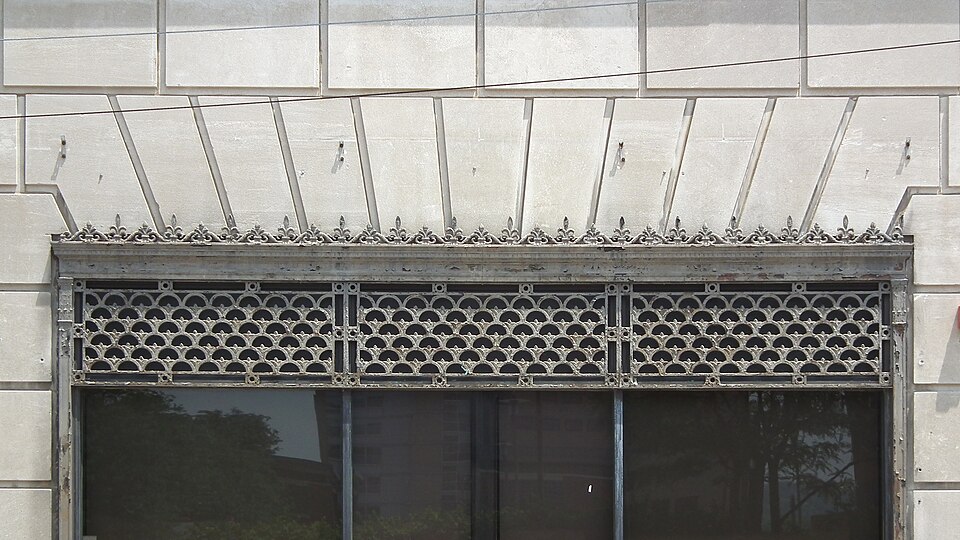
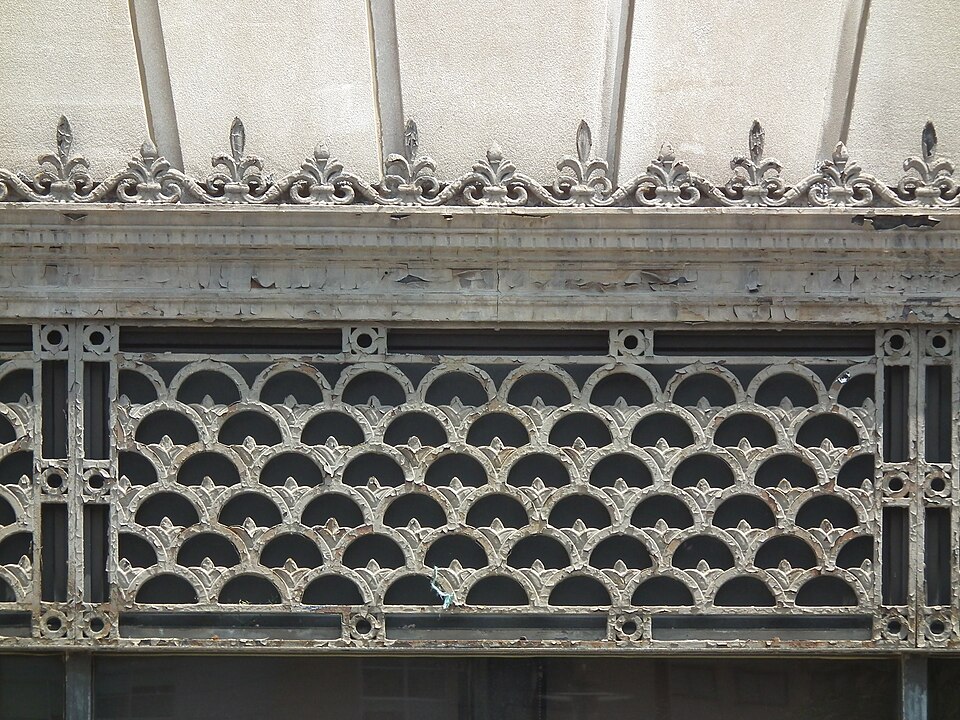
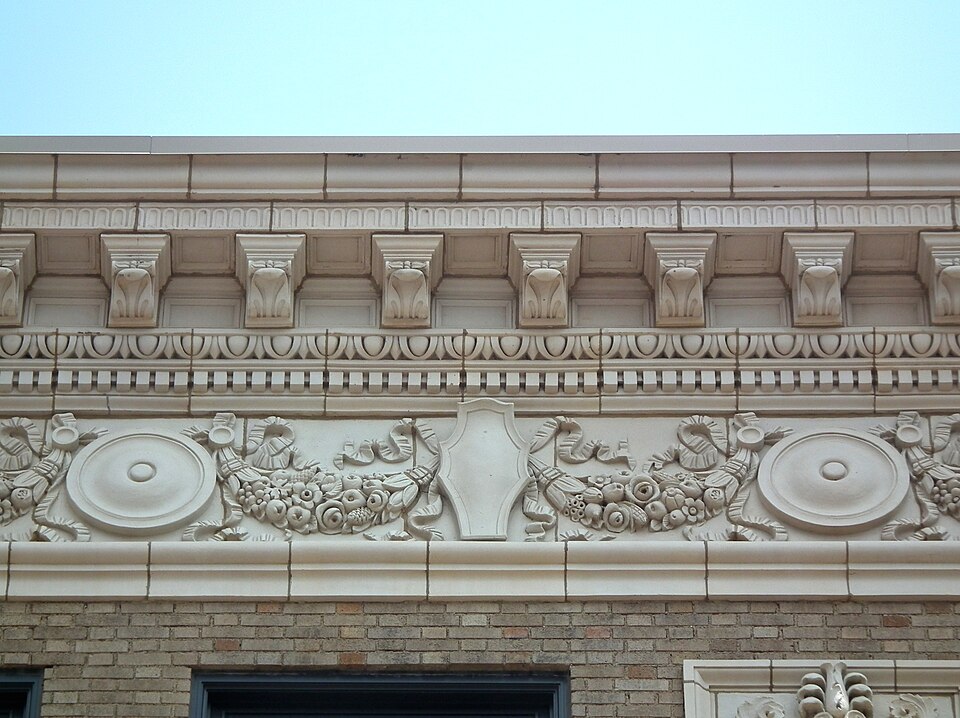
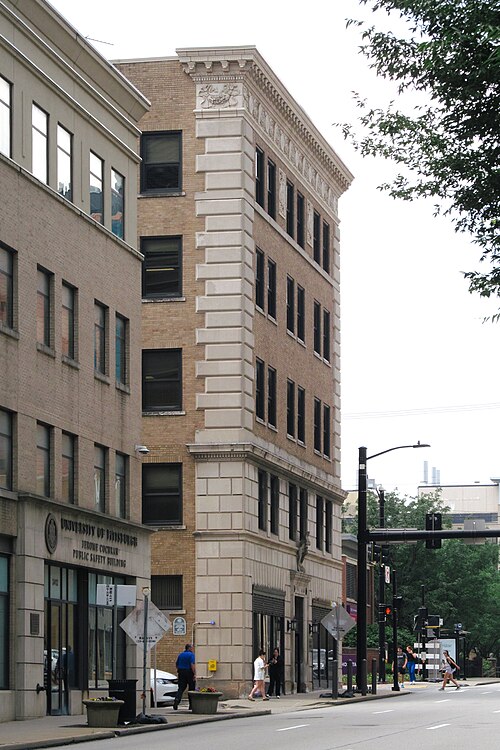
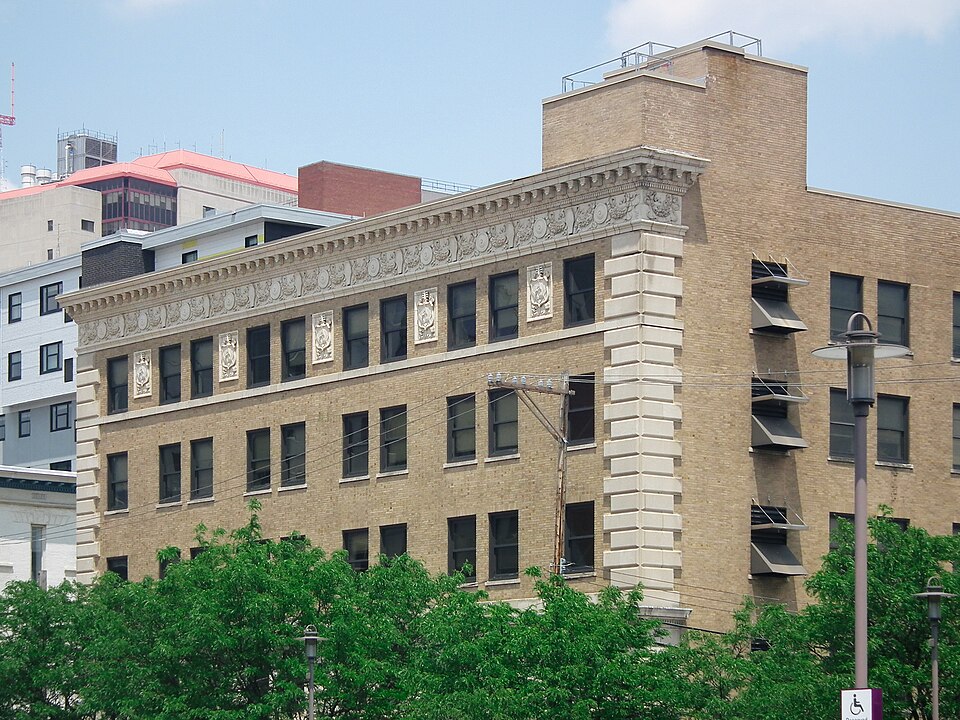
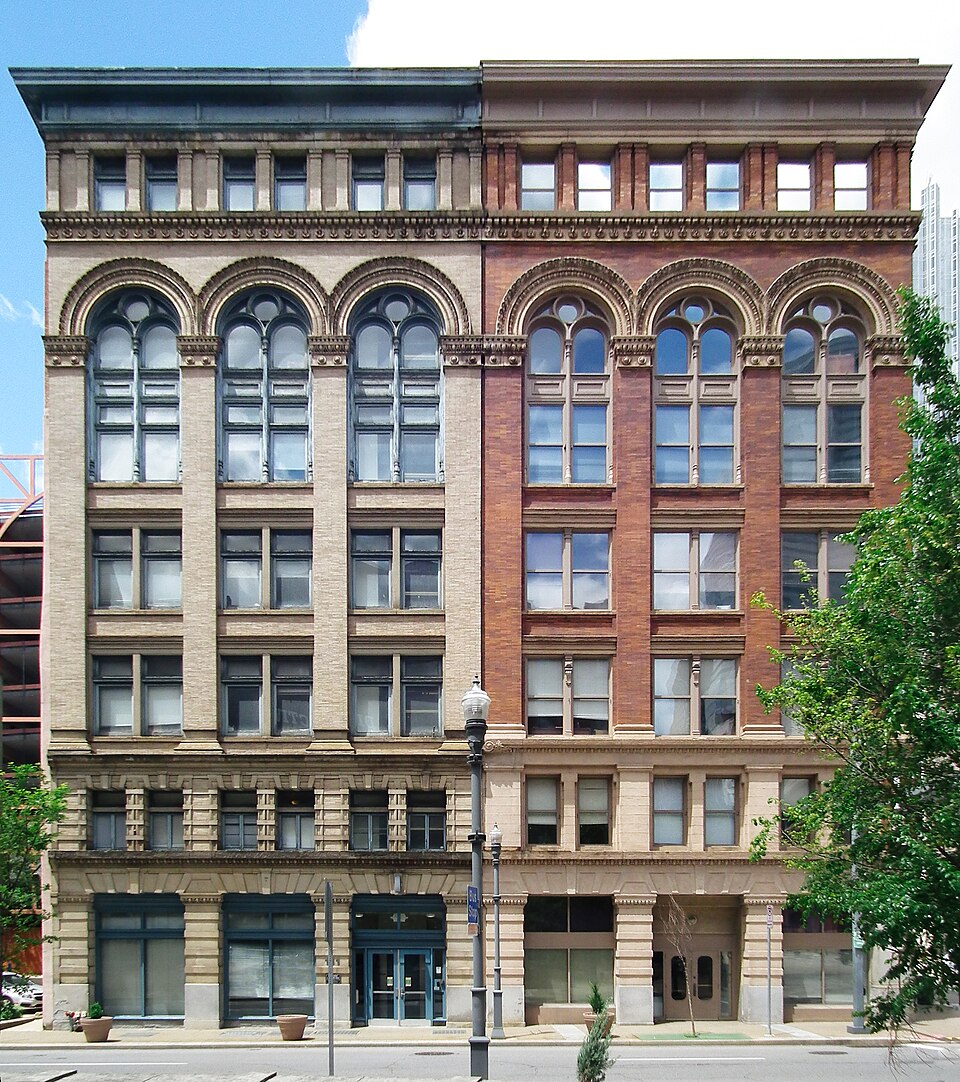
Two nearly identical buildings side by side on Wood Street, both built around the turn of the twentieth century for the Hartje Brothers, a big paper company. Charles Bickel was the architect, and here he compressed the usual American skyscraper formula of base-shaft-cap into seven floors.
The corner building has a long front on the Boulevard of the Allies; we saw it about a year and a half ago, but here is the same picture again.
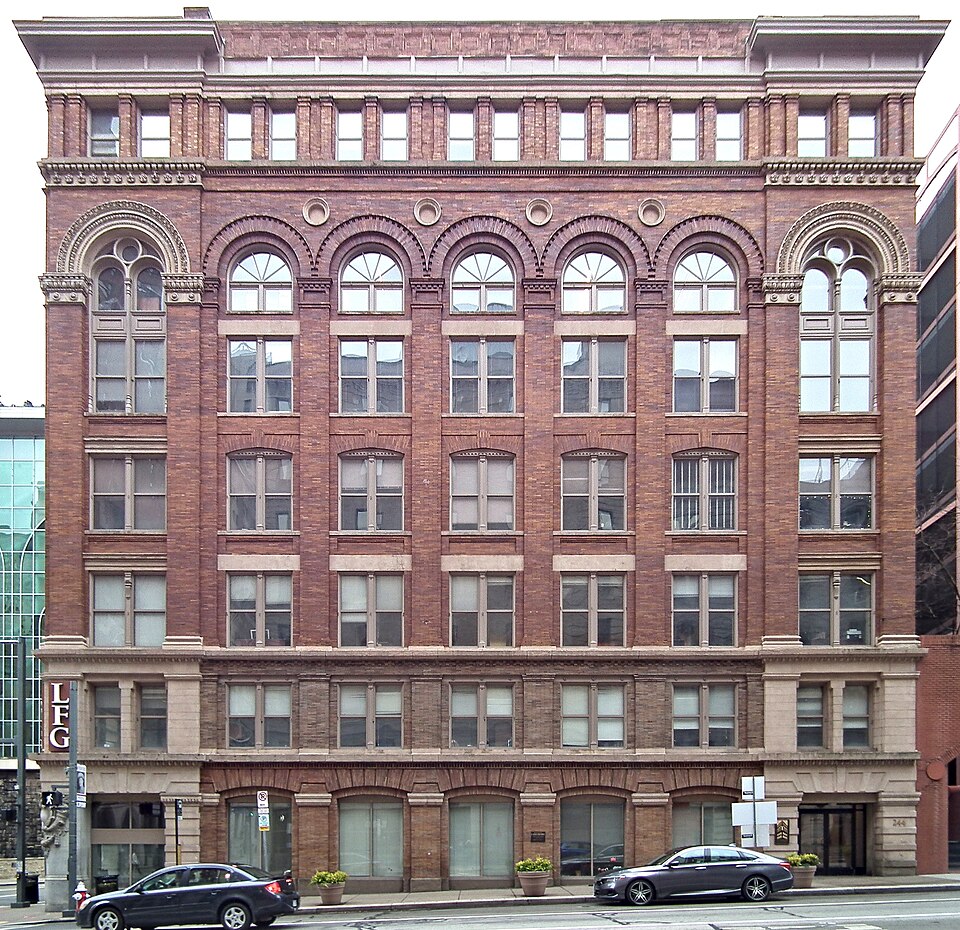
A short time after these buildings went up, the Hartje Brothers called on Bickel again to design a twelve-storey skyscraper a block away at Wood Street and First Avenue, which we have used as a textbook example of the Beaux Arts skyscraper.
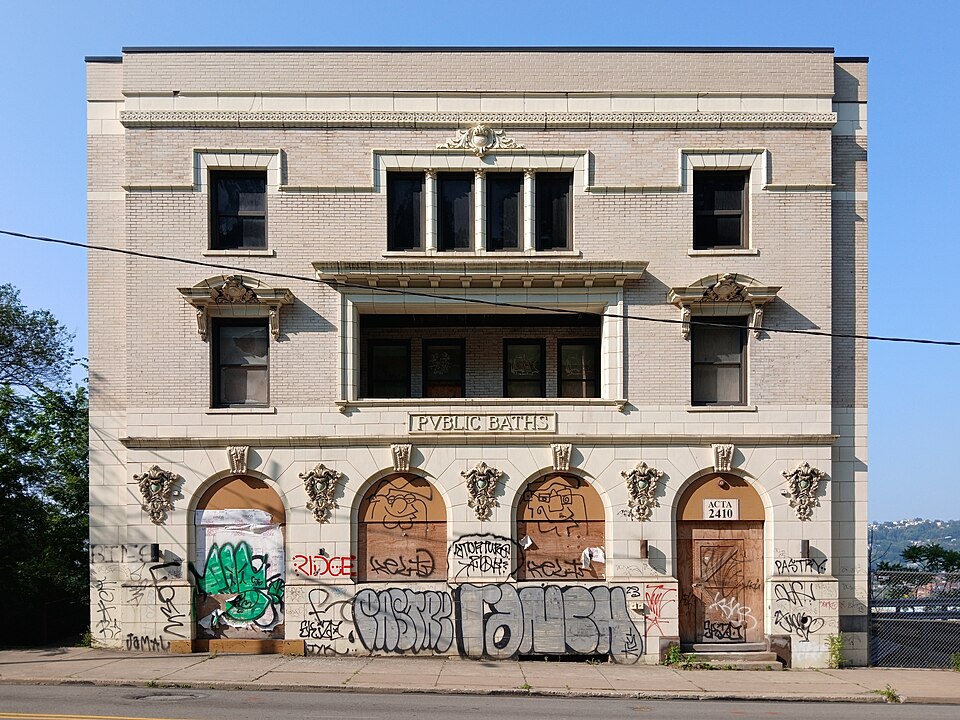
Built in 1907–1908, this splendid bathhouse was designed by Carpenter & Crocker,1 who did the whole ground-floor front in terra cotta.
This bathhouse served Soho, once a crowded neighborhood of tiny houses, many without indoor plumbing; long lines would form on Saturday nights as the working classes took their one chance to get clean. Almost all the houses are gone, and most of the other buildings, leaving overgrown foundations; this stretch of Fifth Avenue is spookily deserted. Even the neighborhood has ceased to exist in Pittsburghers’ imaginations. Soho once referred to the area around the north end of today’s Birmingham Bridge, but there is no such place now on city planning maps. What used to be Soho is divided officially between “Bluff,” “West Oakland,” and “South Oakland.” Soho is generally mentioned only when Andy Warhol comes up, because he was born there; but if you ask where Soho was, Wikipedia will tell you it is a synonym for Uptown, which it will also tell you is the same as the Bluff. (In fact the house where Andy Warhol was born, now a patch of woods on a deserted street, is in the part designated West Oakland by the city.)
This building was in use more recently than most, but it, too, has been left to rot. It is one of only three or four standing public baths in the city, only one of which—the Oliver Bathhouse—is still serving its original purpose.
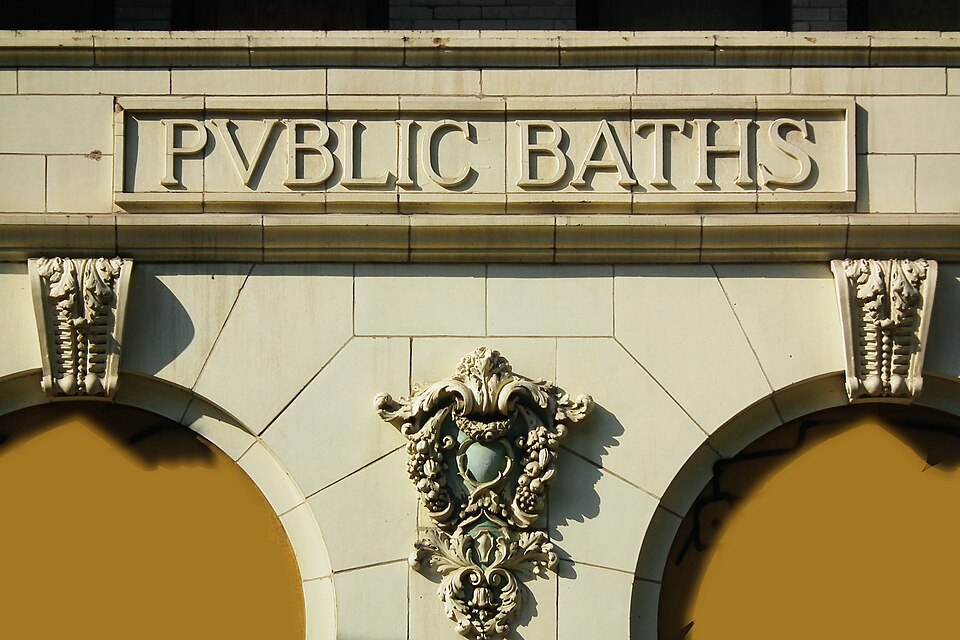
Old Pa Pitt painted out the close-up graffiti in this picture, because they were distracting, and because if street gangs want to advertise on his site, they can pay for it.
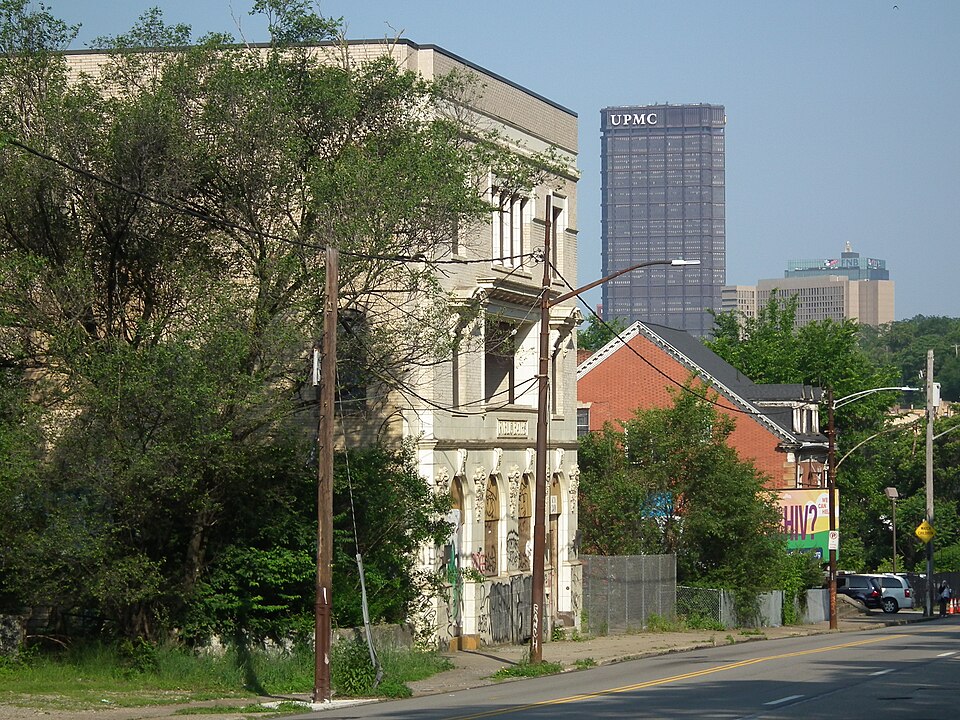
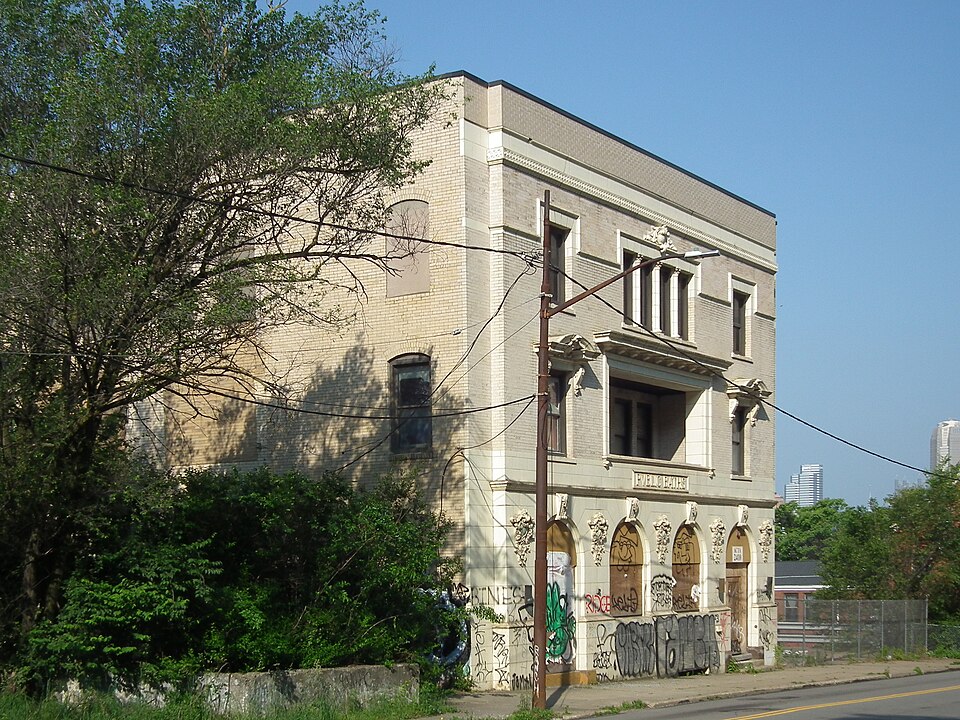
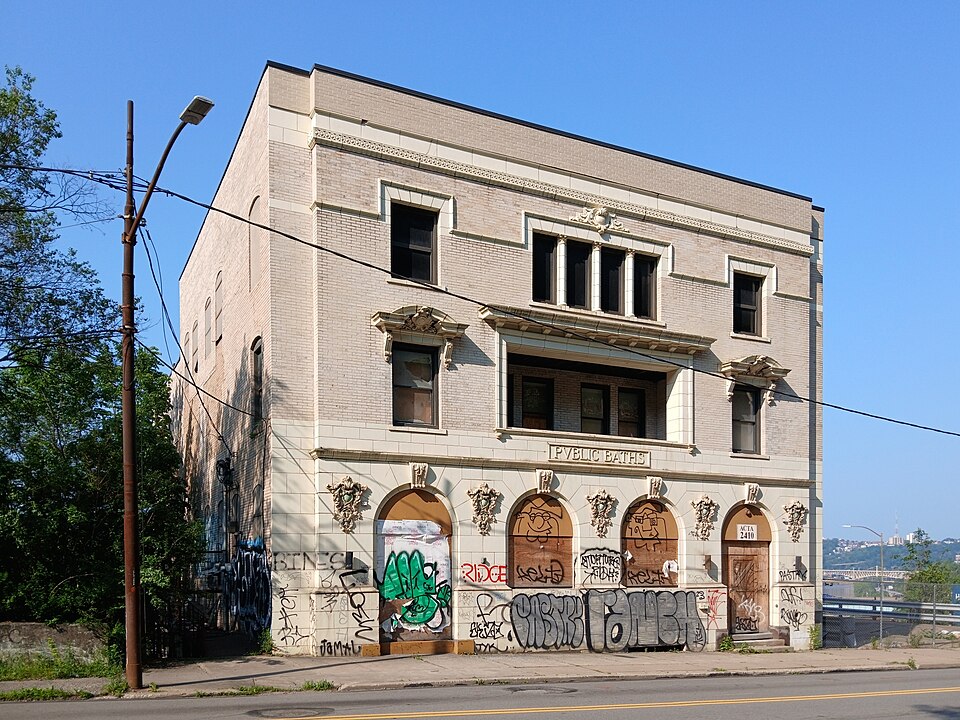
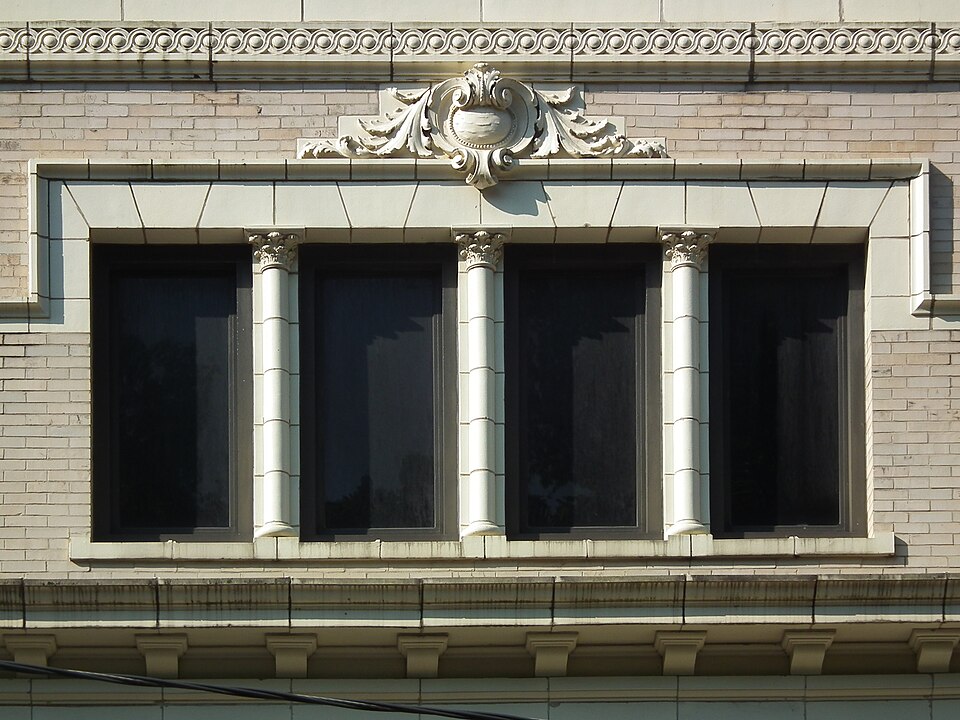
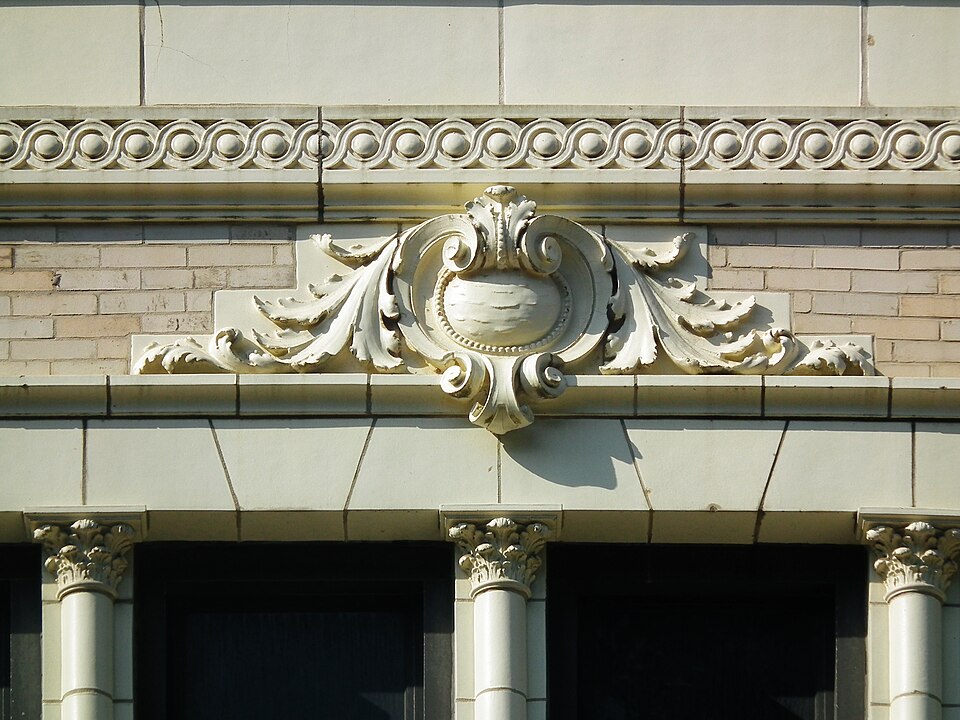
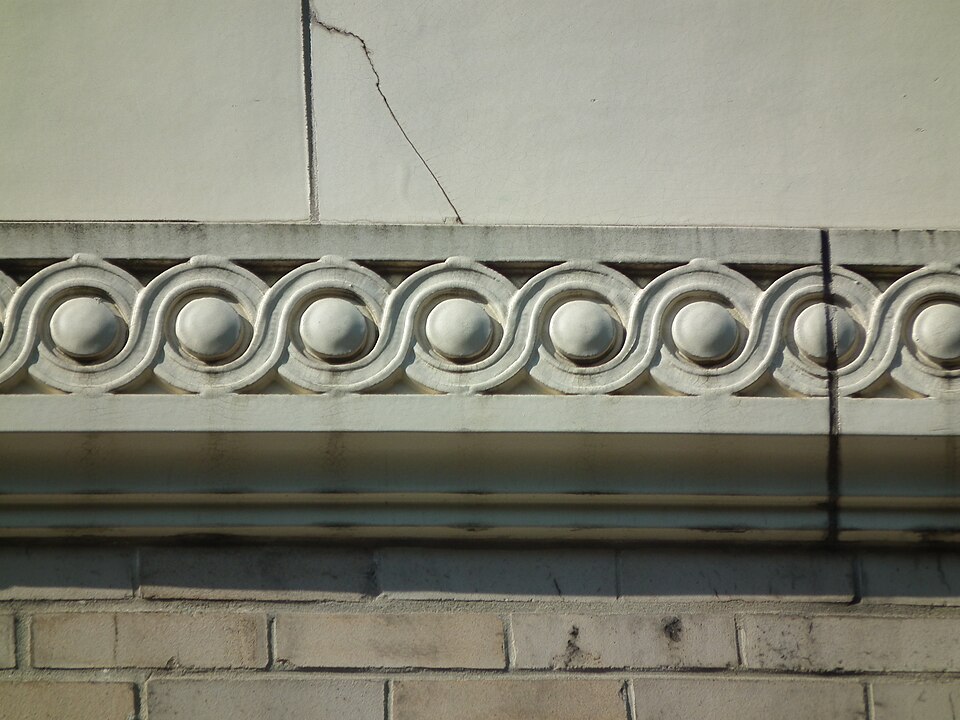
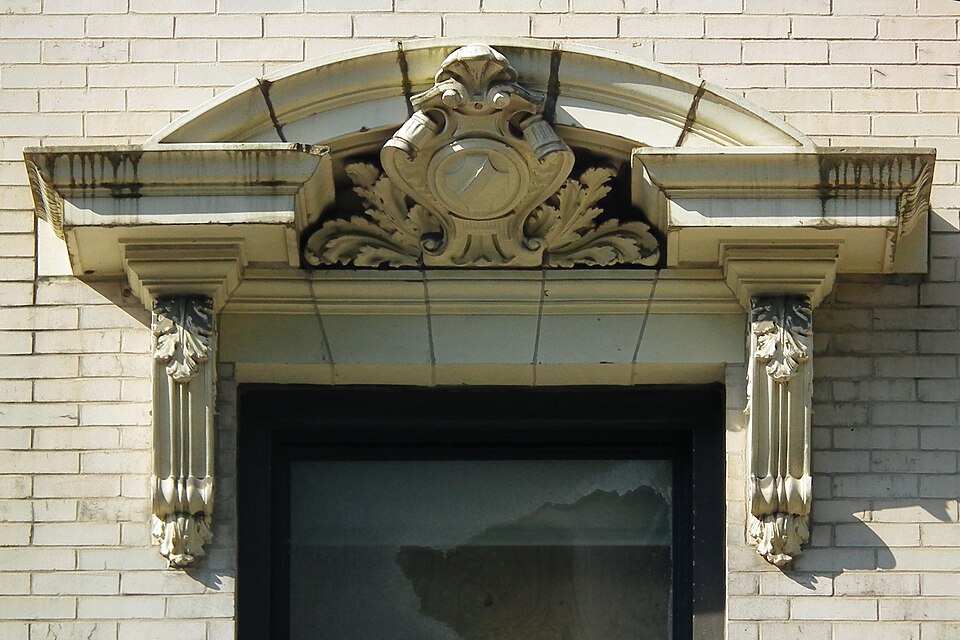
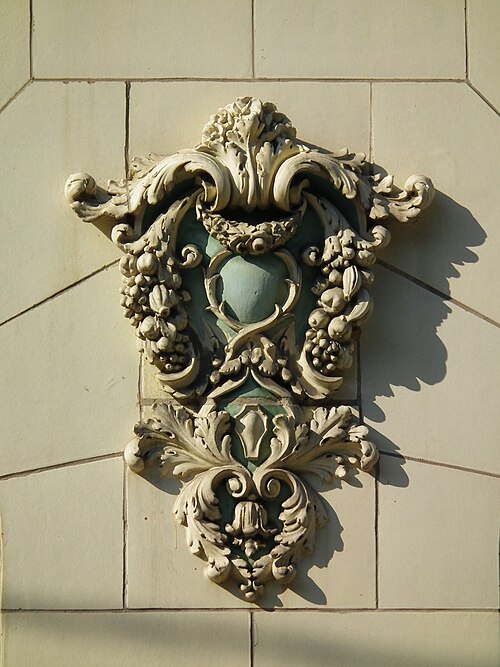
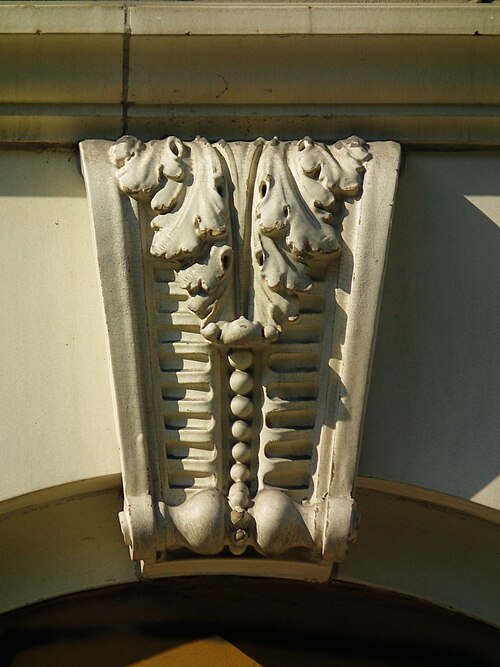
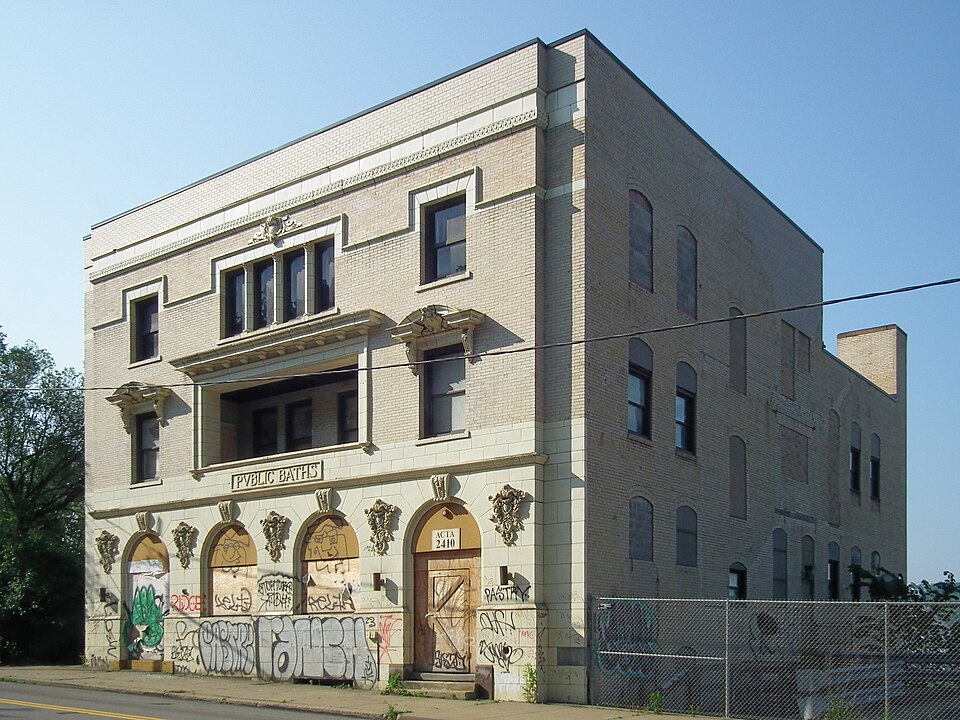
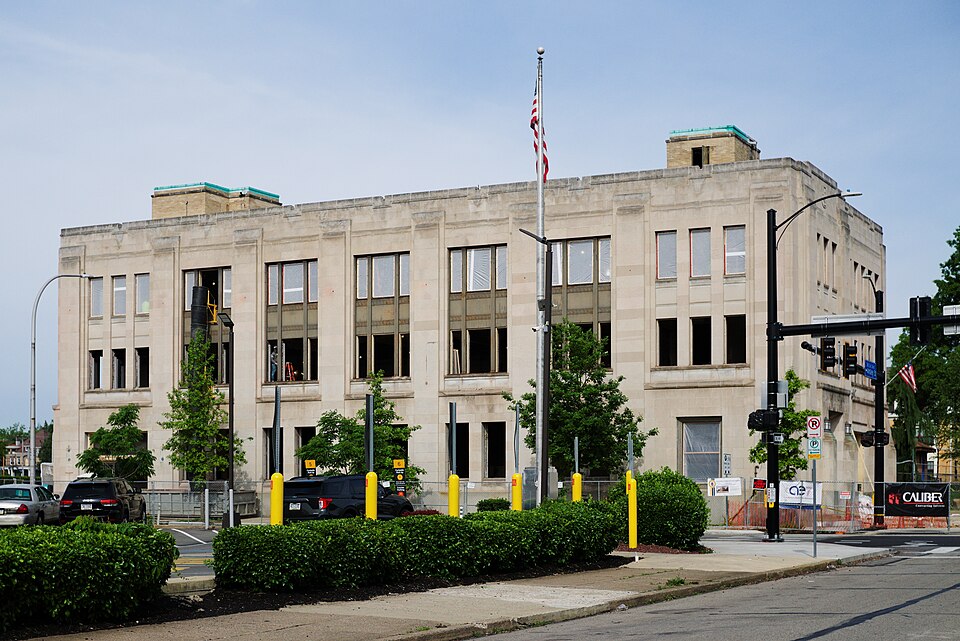
City architect Richard Neff designed this palace of public safety in the style old Pa Pitt likes to call American Fascist, which combines classical detailing with an Art Deco sensibility. It is currently getting a thorough renovation.
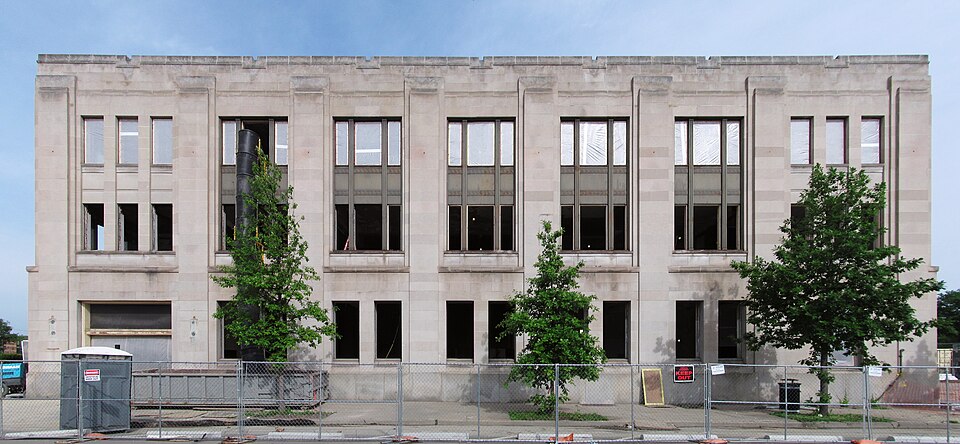

It’s Construction Safety Week! But don’t worry. You still have fifty-one weeks in the year to be careless.
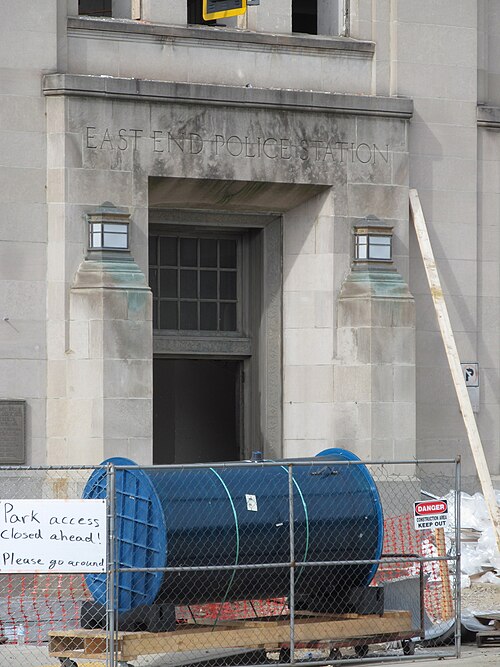
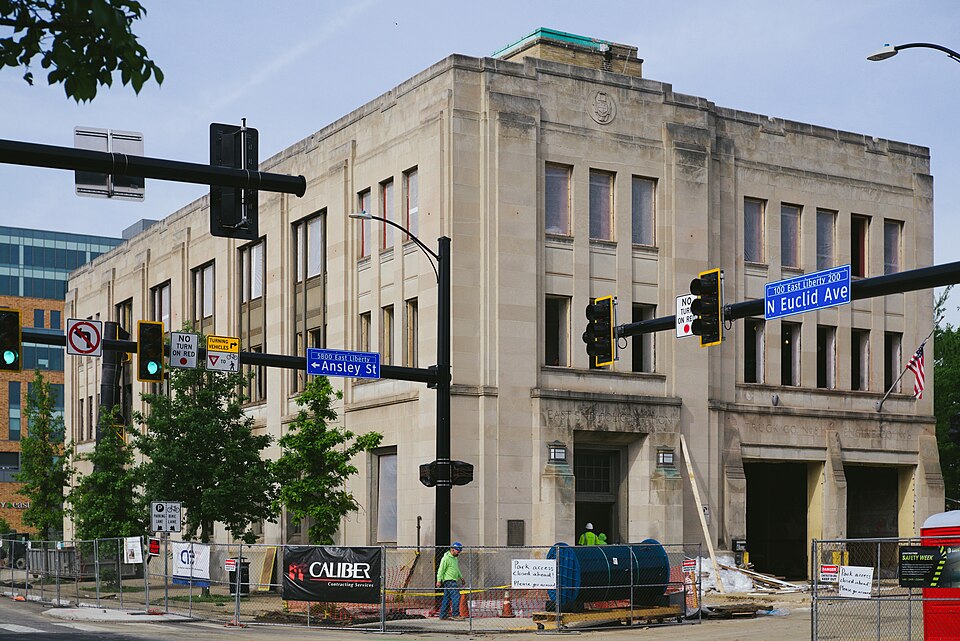
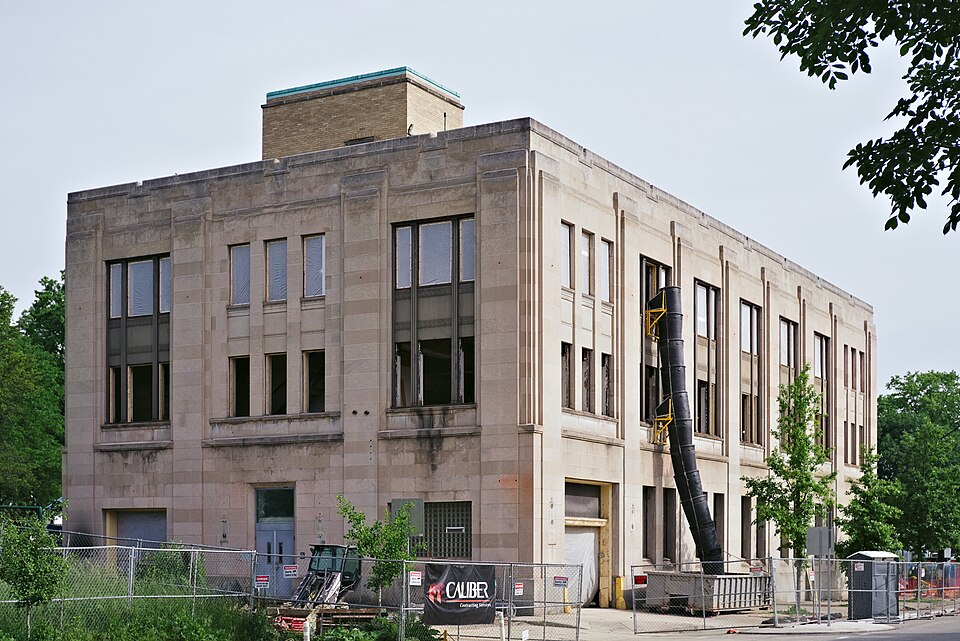
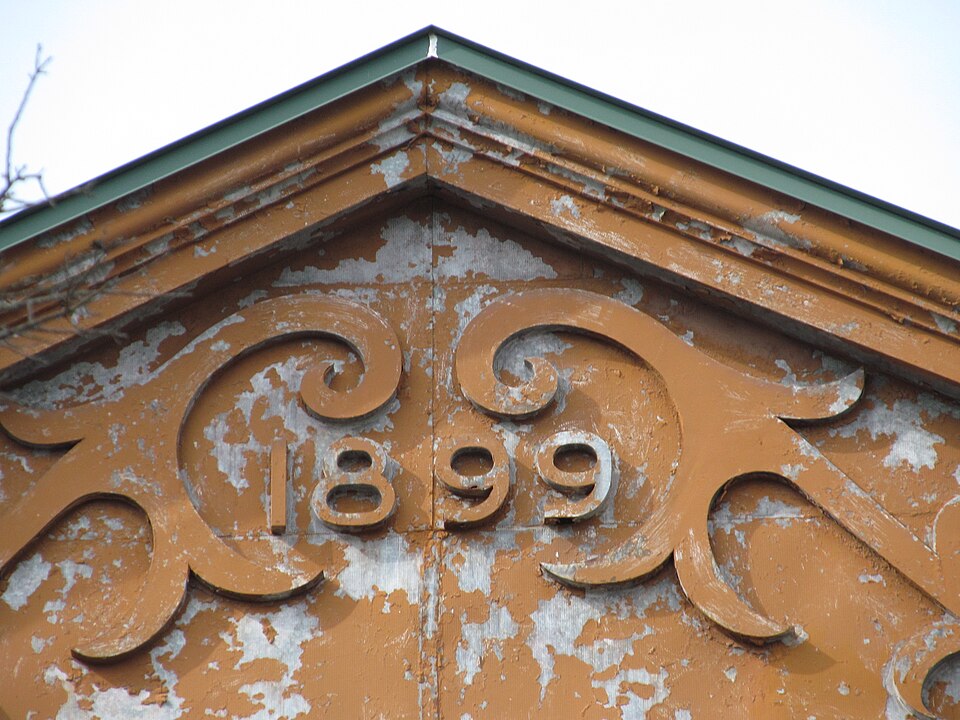
Here is a relic of the genesis of the Electric Age. In the early days of electric light, the East End Electric Light Company supplied the rich East Enders with current to light their mansions. In 1899 it built this large substation, which is still in use by Duquesne Light today. Although it is clearly industrial, the building was put up at a time when an industrial building had to be ornamental as well as useful. It was therefore built in the style the ancient Romans might have used it they had built electric substations in their cities.
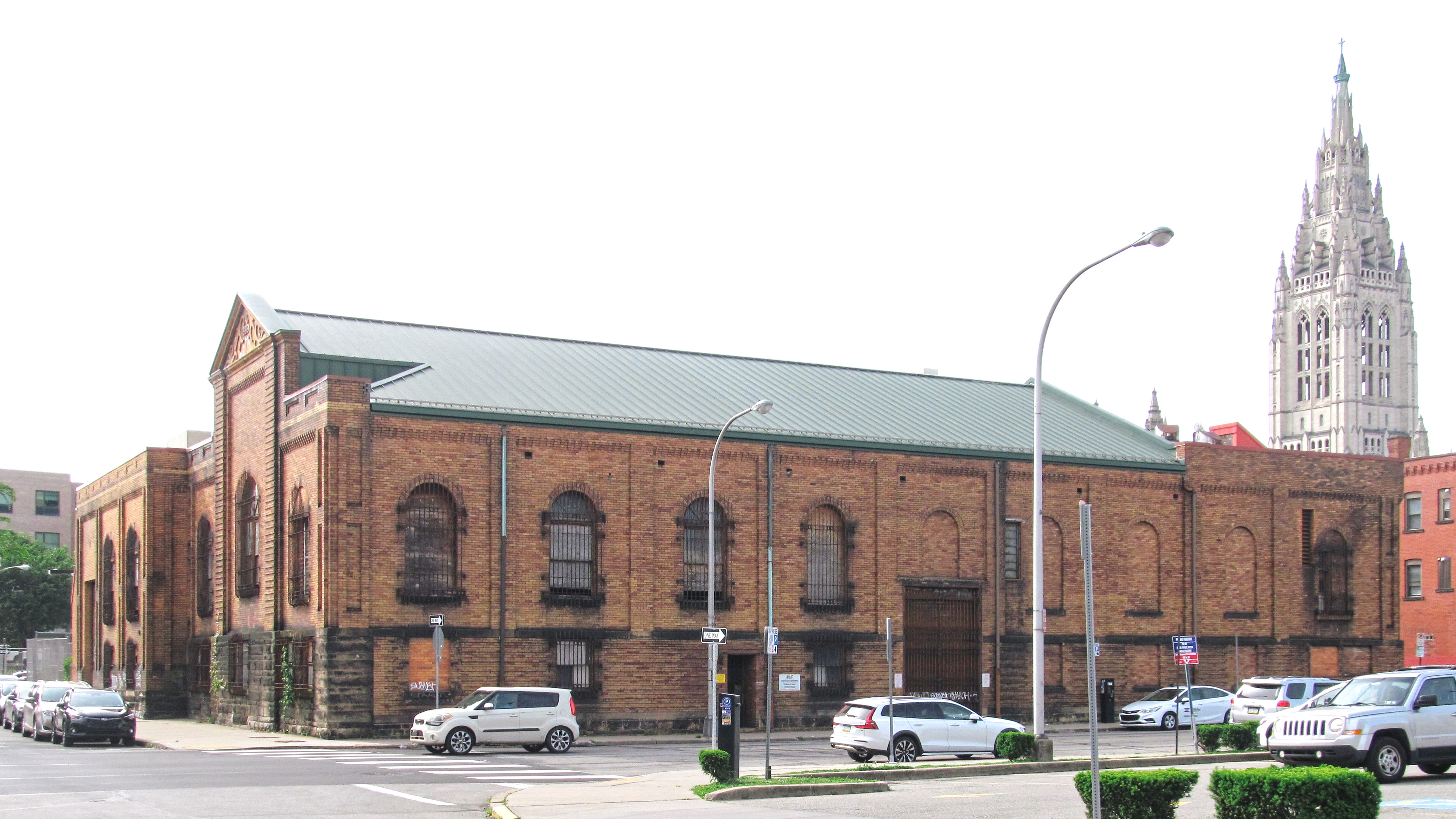
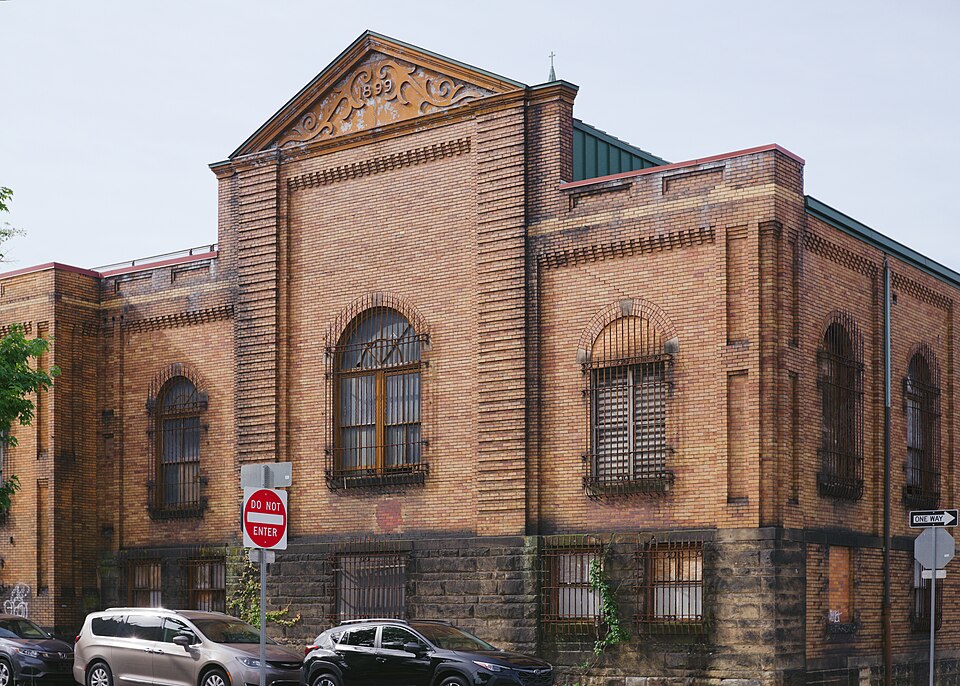
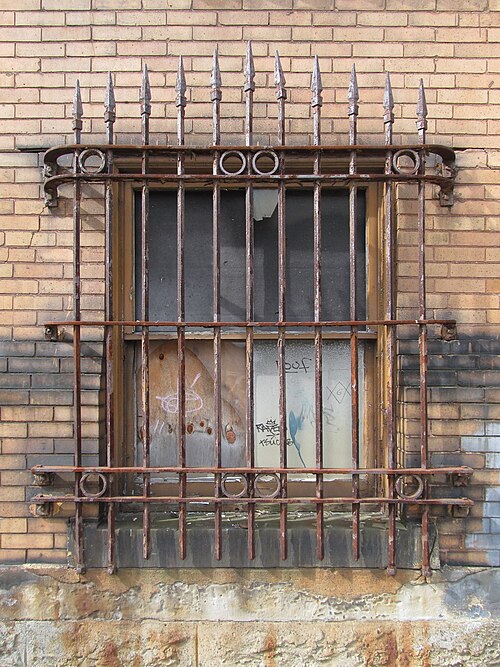
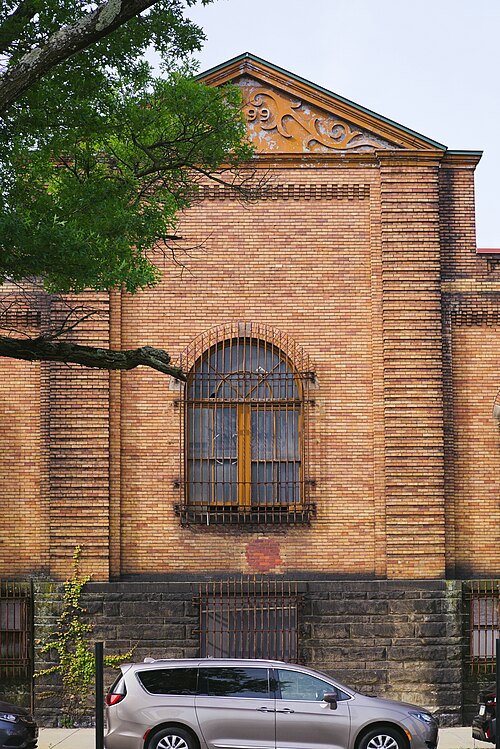
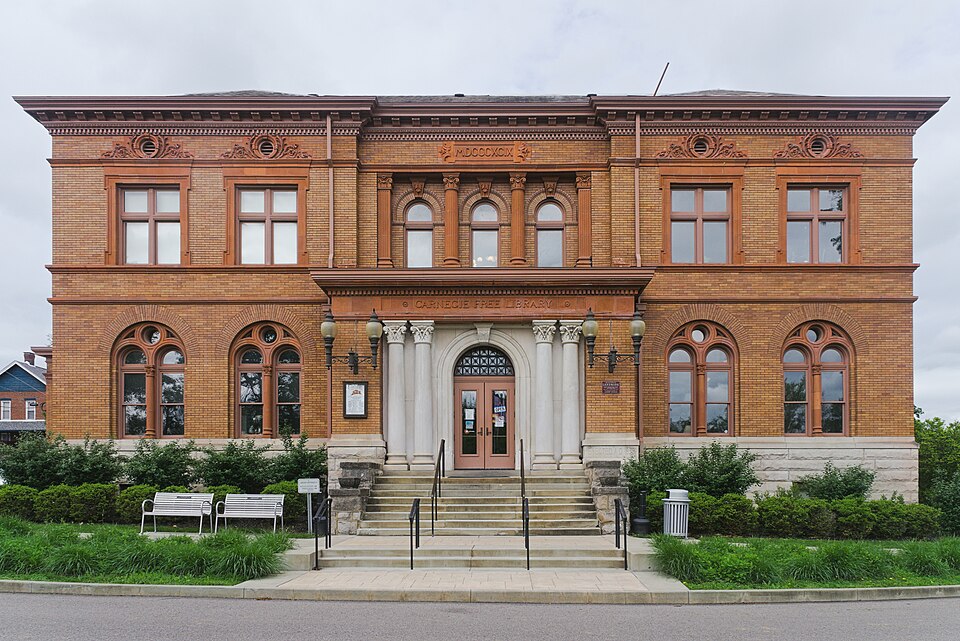
Officially the Andrew Carnegie Free Library, or the Carnegie Free Library by the inscription over the door, but the name “Carnegie Carnegie” is obvious and irresistible and adopted for the library’s Web site.
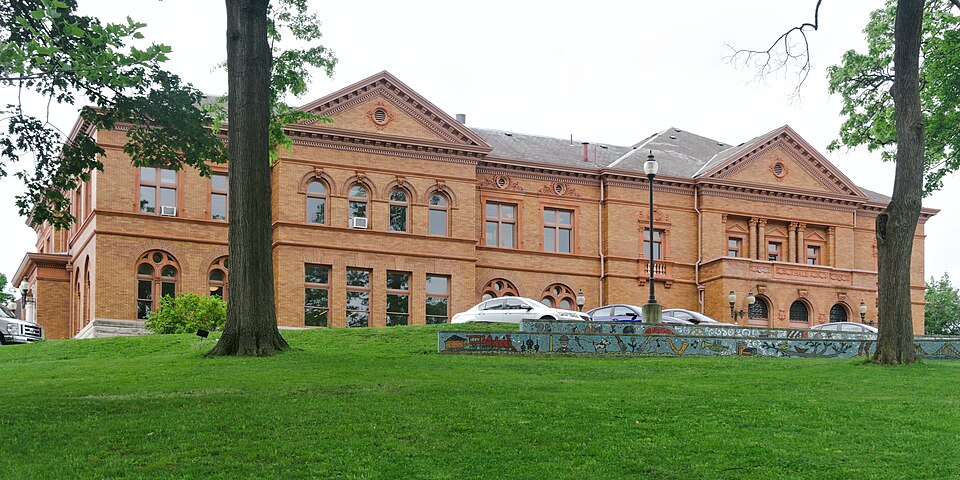
When the two Chartiers Valley boroughs of Mansfield and Chartiers merged in 1894, they decided to name the new town Carnegie after what was probably the most familiar name in the Pittsburgh area. In return, Andrew Carnegie gave them the jaw-dropping sum of $200,000 for this magnificent building (designed by Struthers & Hannah), plus money for books and—unusually for Carnegie—an endowment. His usual agreement with towns that took a library from him was that the town must undertake the upkeep, thus making the citizens ultimately responsible for their library; but in a few steel towns (where we suppose he felt more personally responsible) he endowed the library with enough of a fund to keep it going indefinitely.
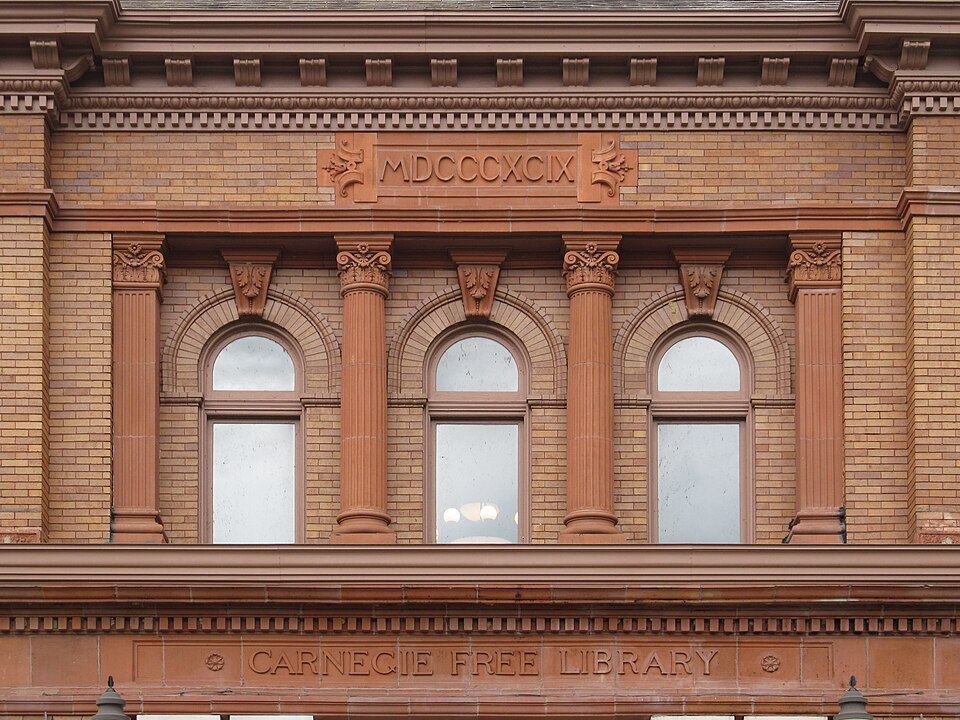

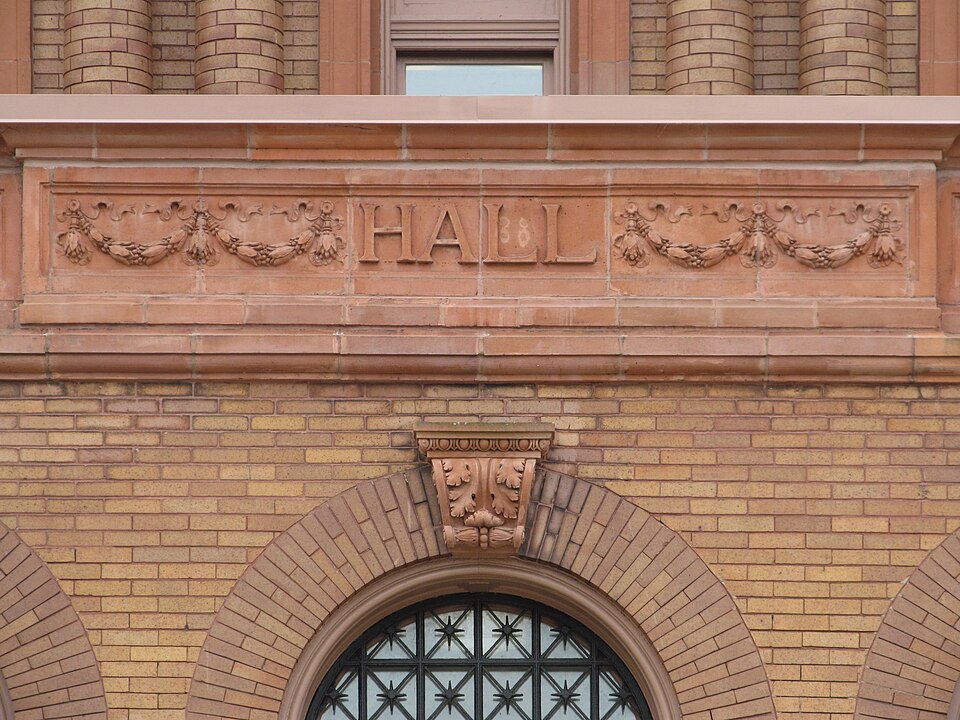
Like Carnegie’s other steel-town libraries, this one was not just a library. It also had a music hall, a gymnasium, and a lecture hall.
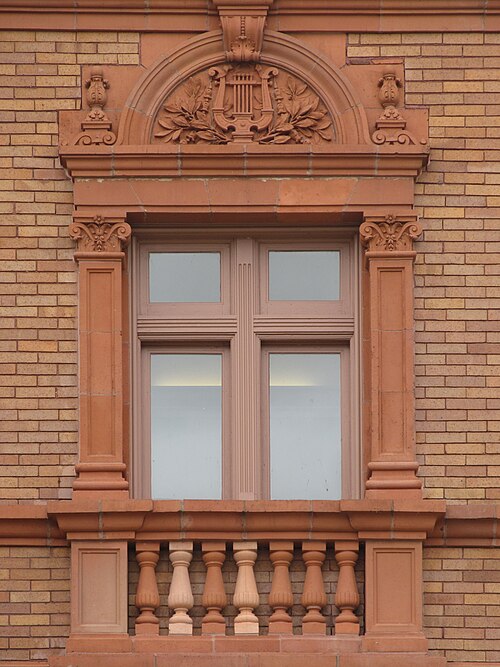
Note the terra-cotta lyre over this window on the music-hall front of the building. Today the music hall is still delighting audiences, and the library sticks to its mission of being a welcoming place to go read a book.
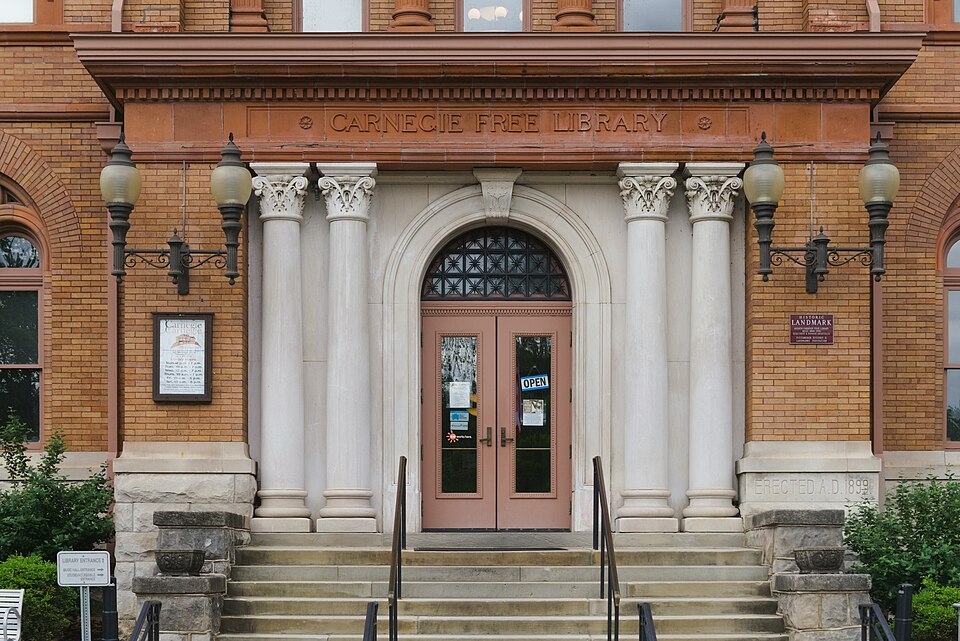
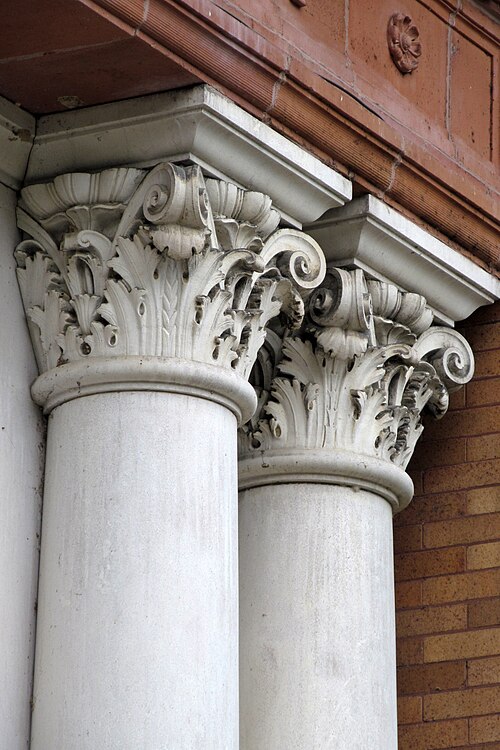
Columns of the Composite order, the most elaborate of the five classical orders, send the message that this is not just a library but a palace for the people.

The lobby lets us know that we have entered a building of unusual richness. Marble panels cover the walls, and mosaic tile decorates the floor.
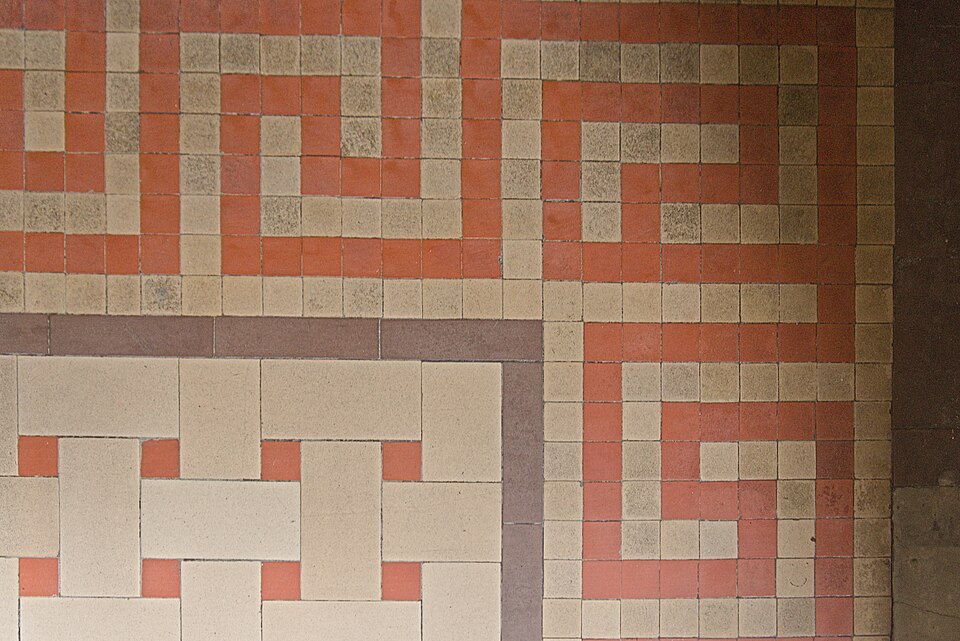

The Greek-key pattern in the tile is repeated in the risers in the stairs.
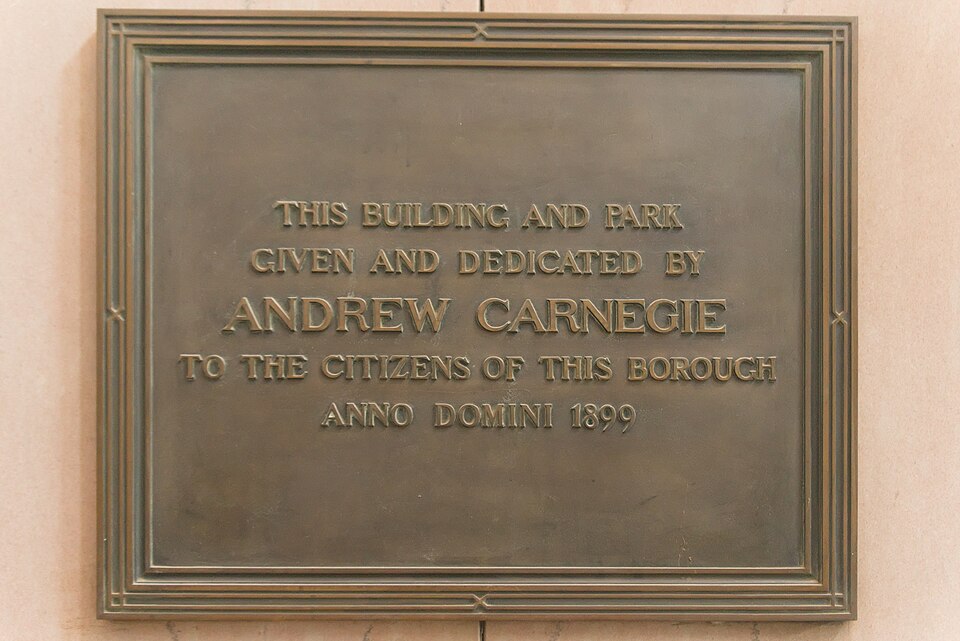
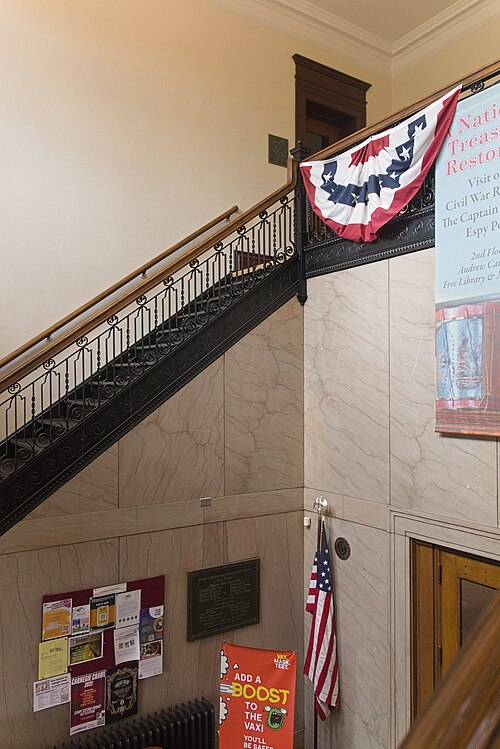
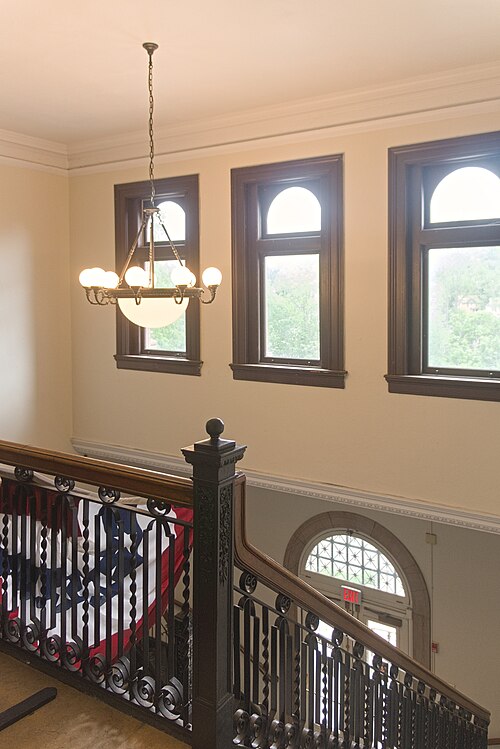
On the second floor of the building is an extraordinarily well-preserved post of the Grand Army of the Republic, and Father Pitt will try to return soon for some pictures of the room.
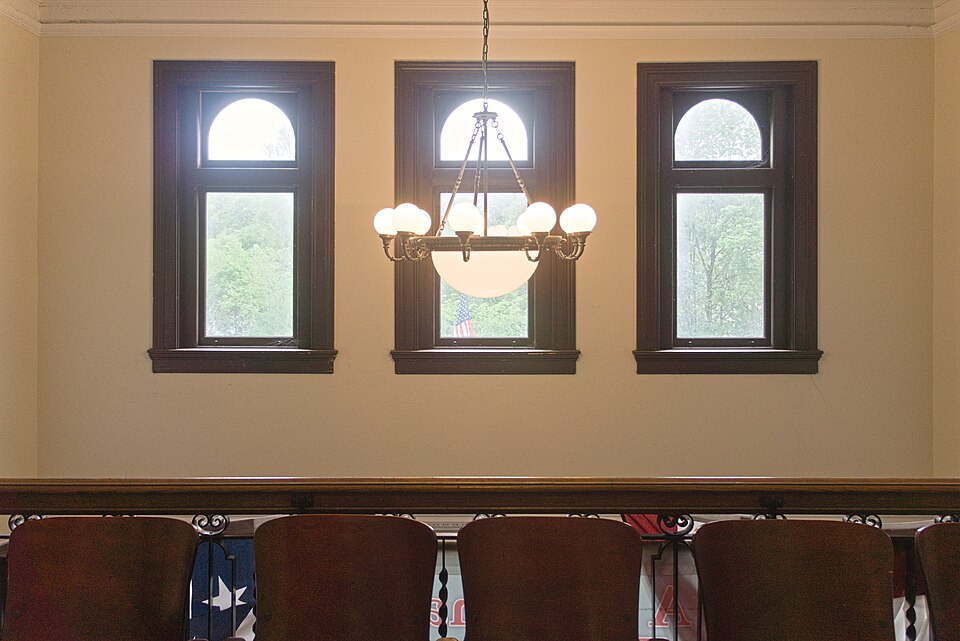
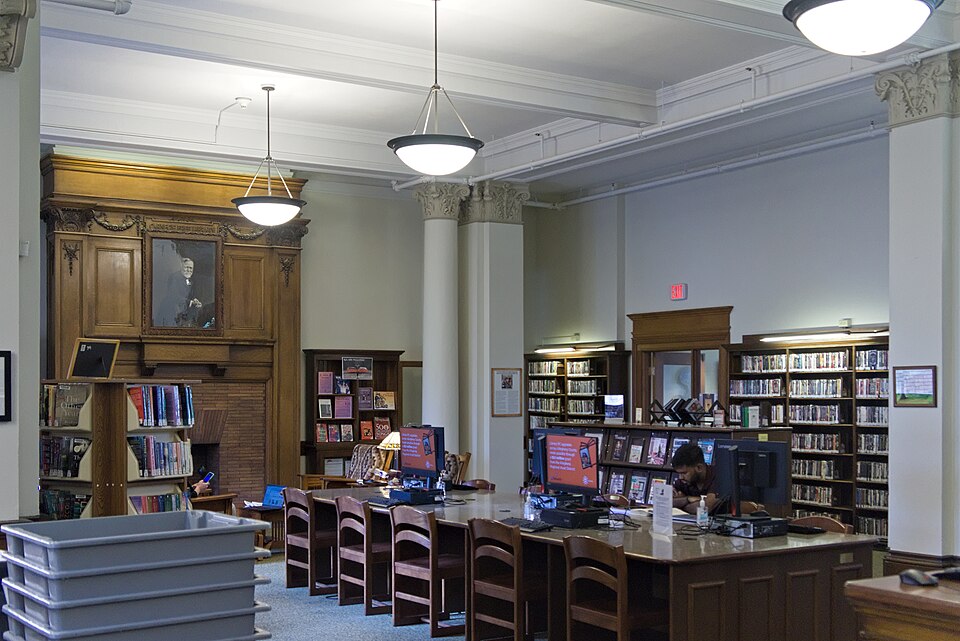
The interior of the library itself mimics the experience of being a rich man with a big library—like old Col. Anderson, whose library was Carnegie’s model. You walked in, sat in front of a big fireplace, and had servants bring you books, and for an hour or two you were just as wealthy as Carnegie himself.
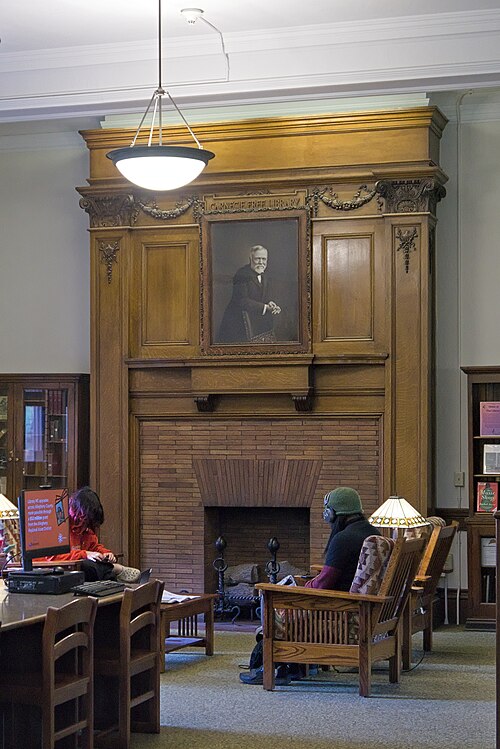
Open stacks have eliminated the servants, but the fireplace is still there, with a familiar face over the mantel.
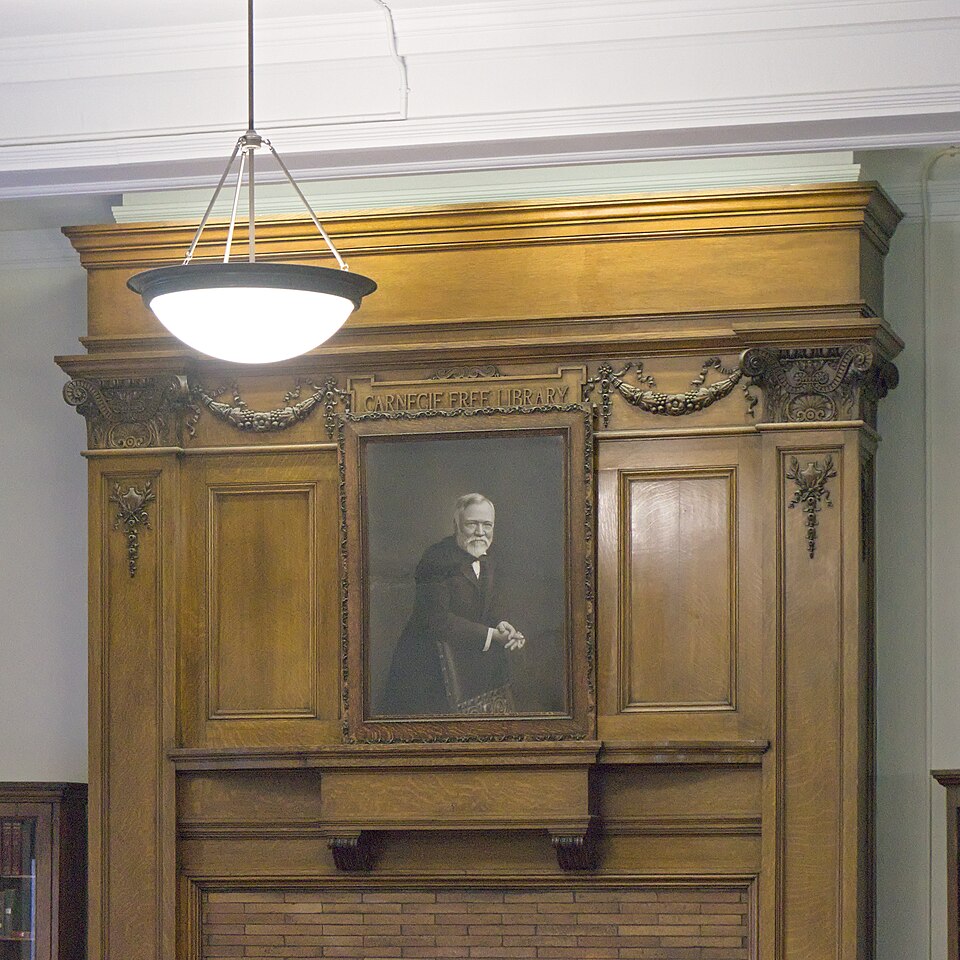
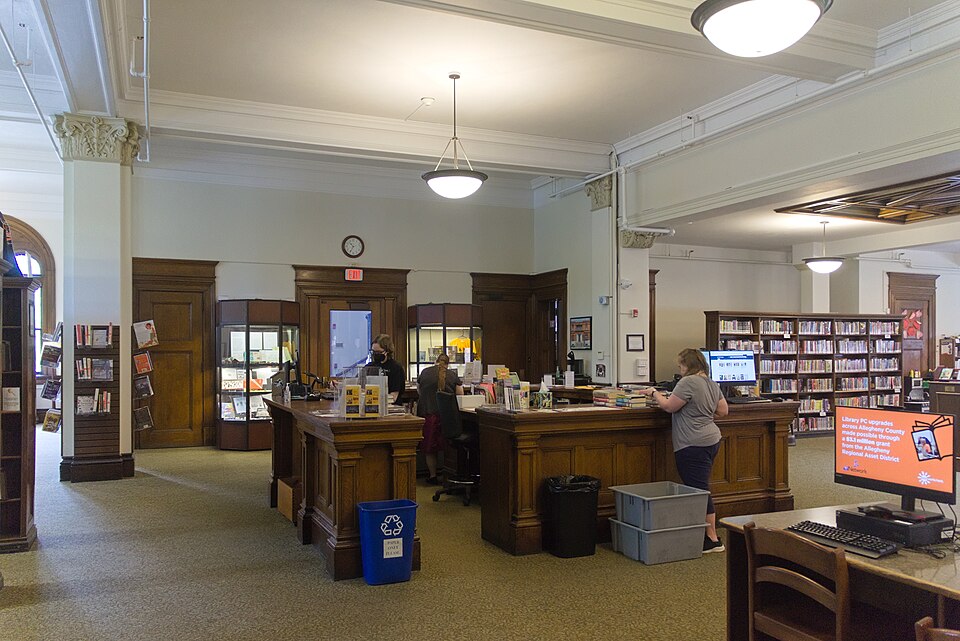
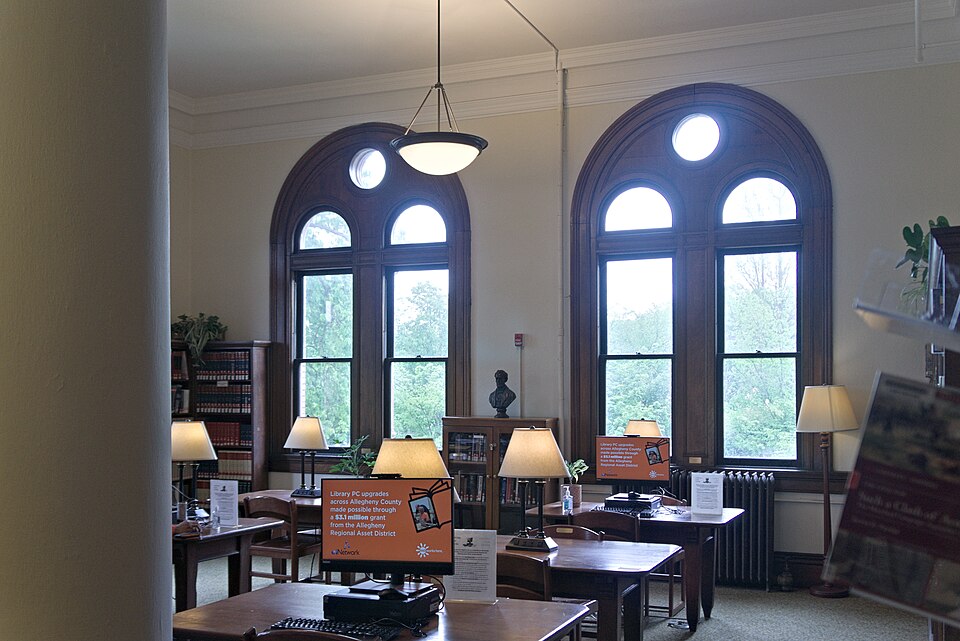
In days of gaslights and low-wattage early electric bulbs, natural light from outside was still important for a reading room. Fortunately no one ever had the money to block up these windows.
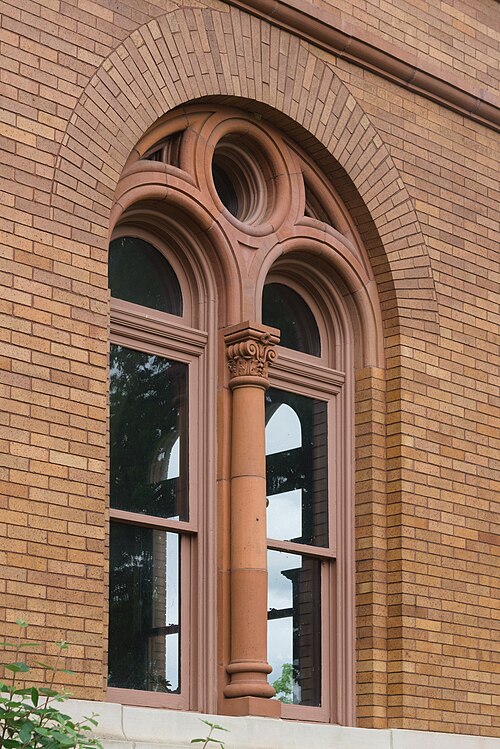
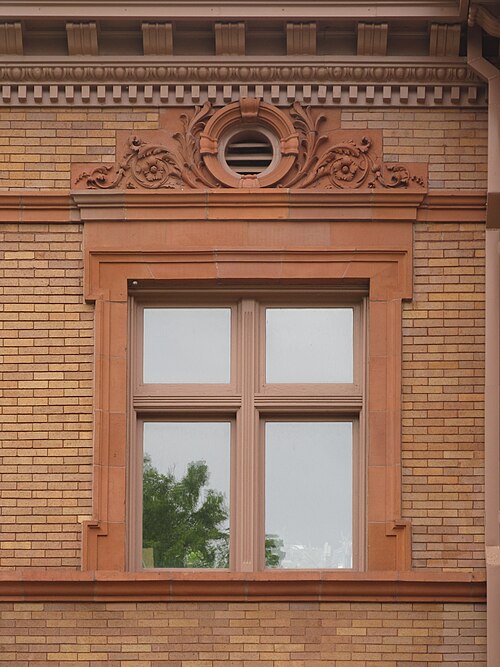
All the windows are surrounded with elaborate terra-cotta decorations.
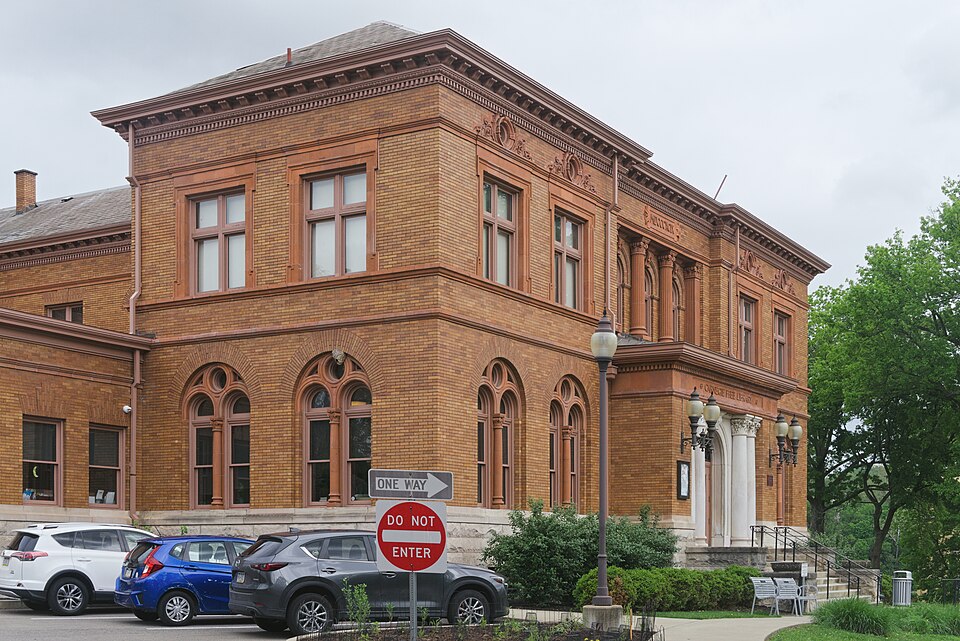
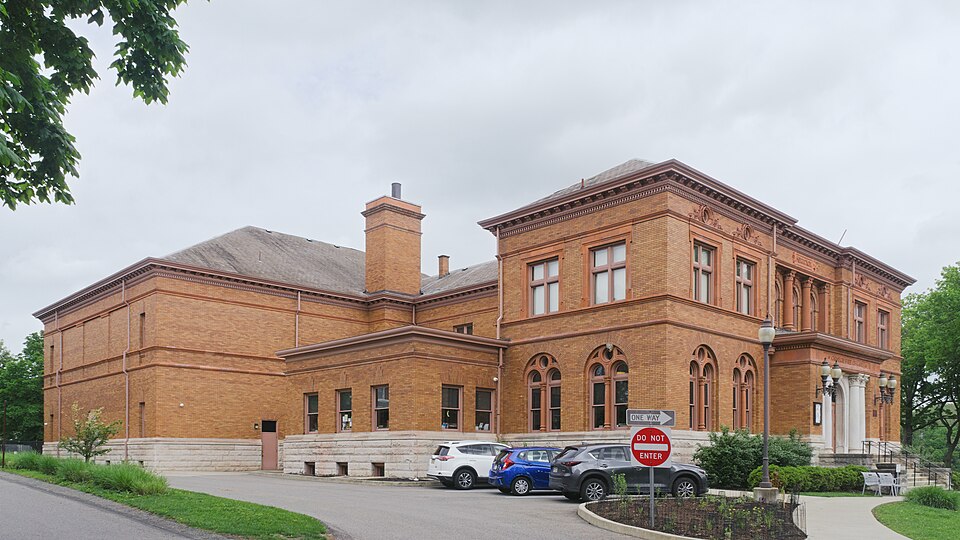
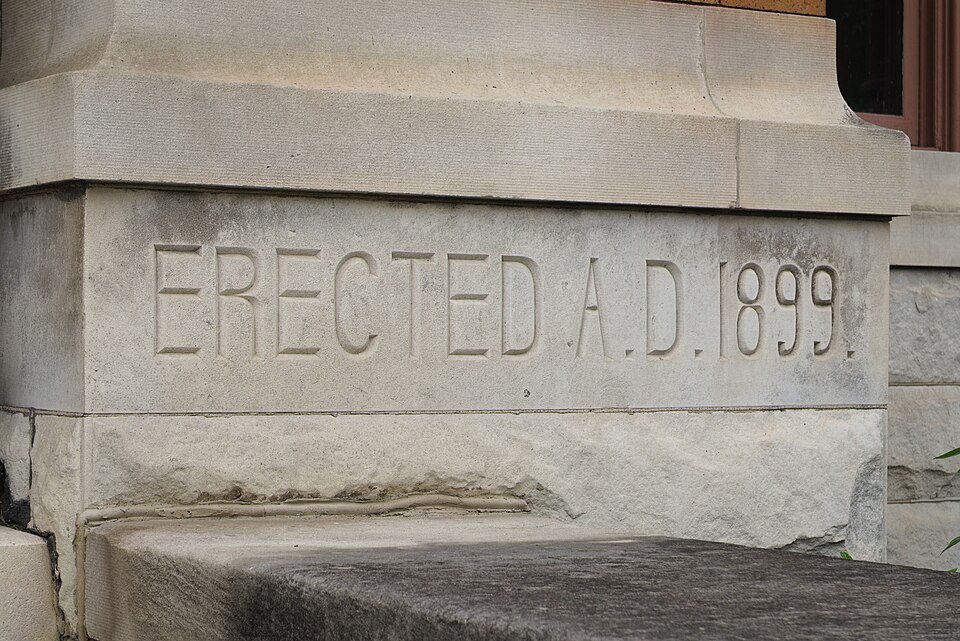
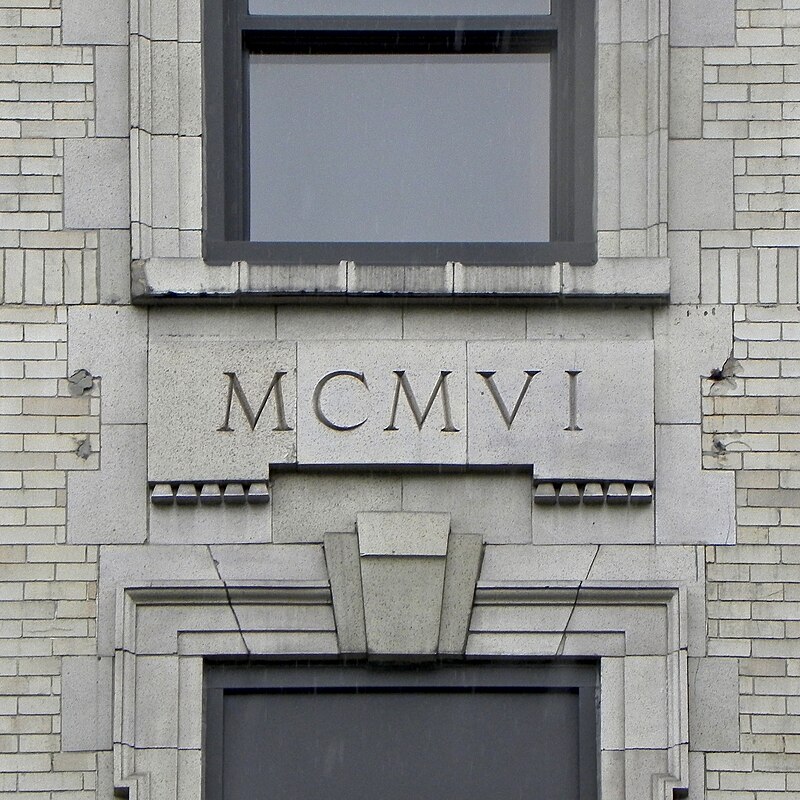
A few months ago Father Pitt published a view of the front of the old Presbyterian Hospital on the North Side, which is where Presby lived before it moved to Oakland to become the nucleus of the medical-industrial complex there. Since he was walking by the building again the other day, old Pa Pitt thought he would add a few more details.
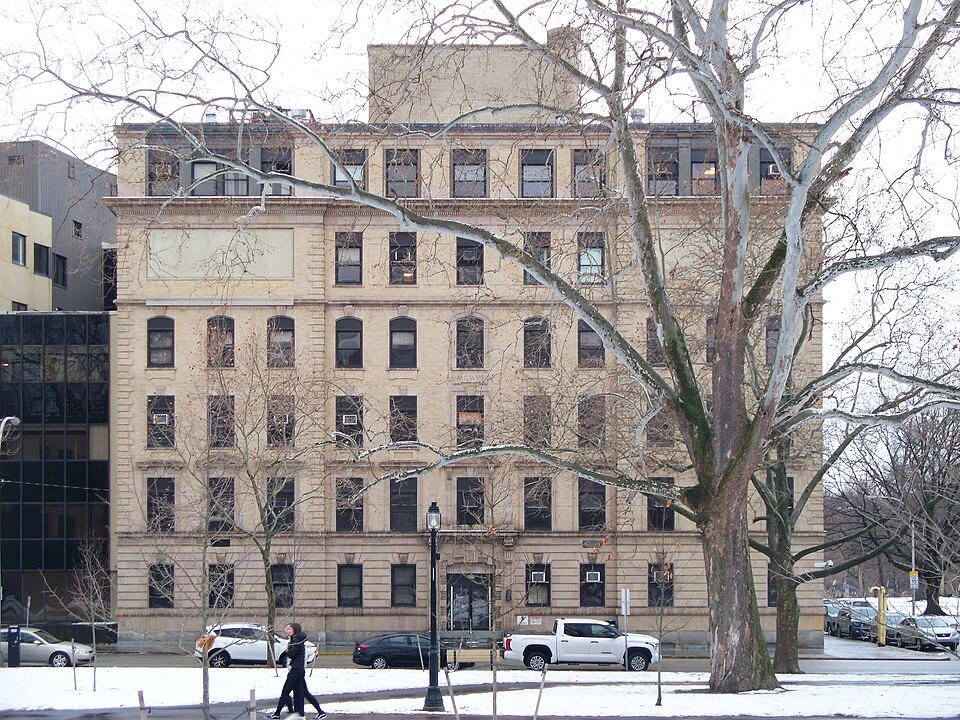
After Presby moved out, this site was used as Divine Providence Hospital for many years. The last we heard, the building was mostly vacant, but was being considered for conversion to “affordable” apartments.
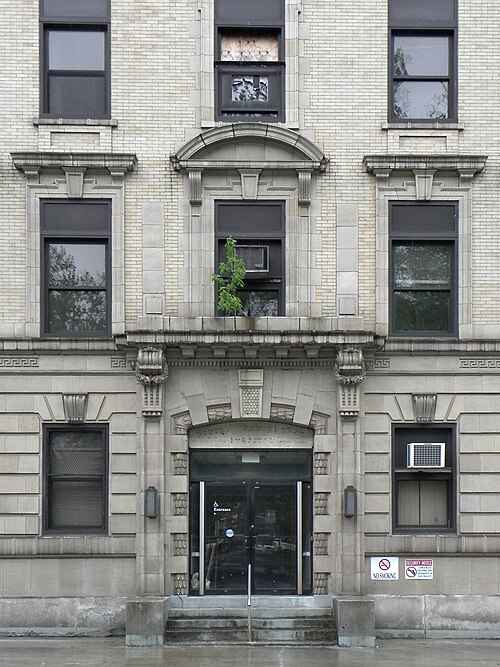
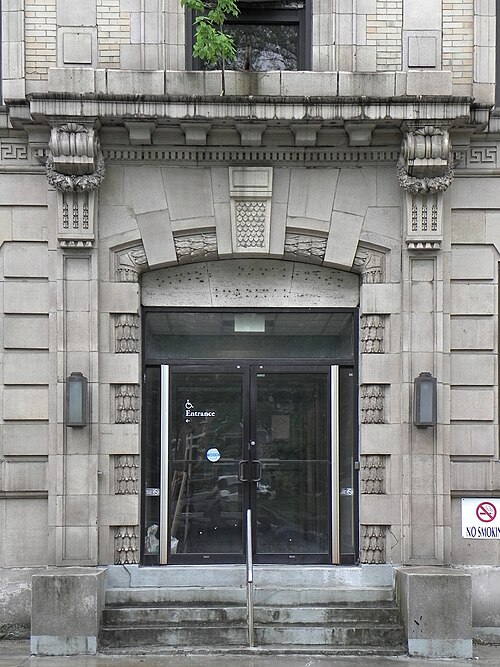
We can just make out the ghosts of letters spelling out “DIVINE PROVIDENCE HOSPITAL.”
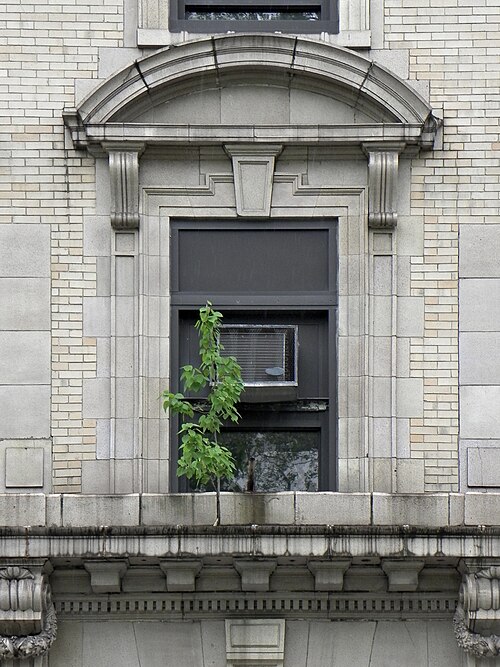
If we cannot find a use for a building, Mother Nature will.
